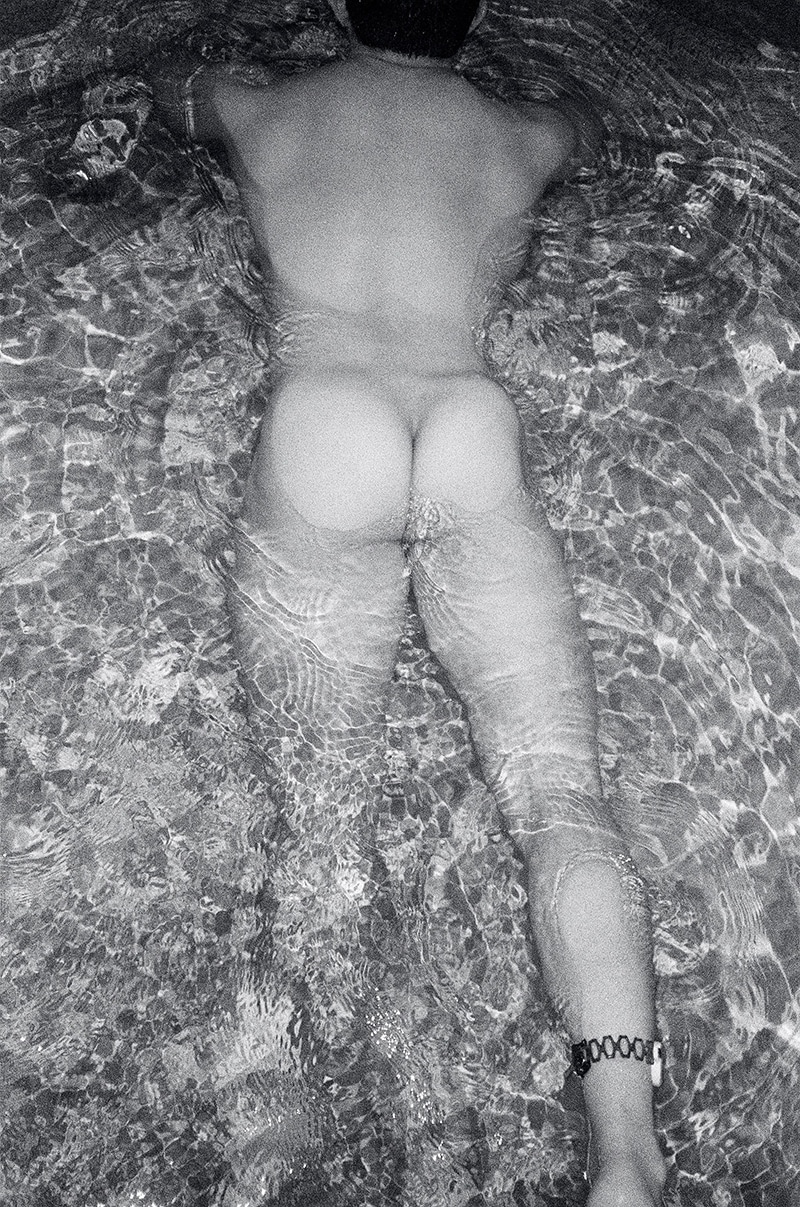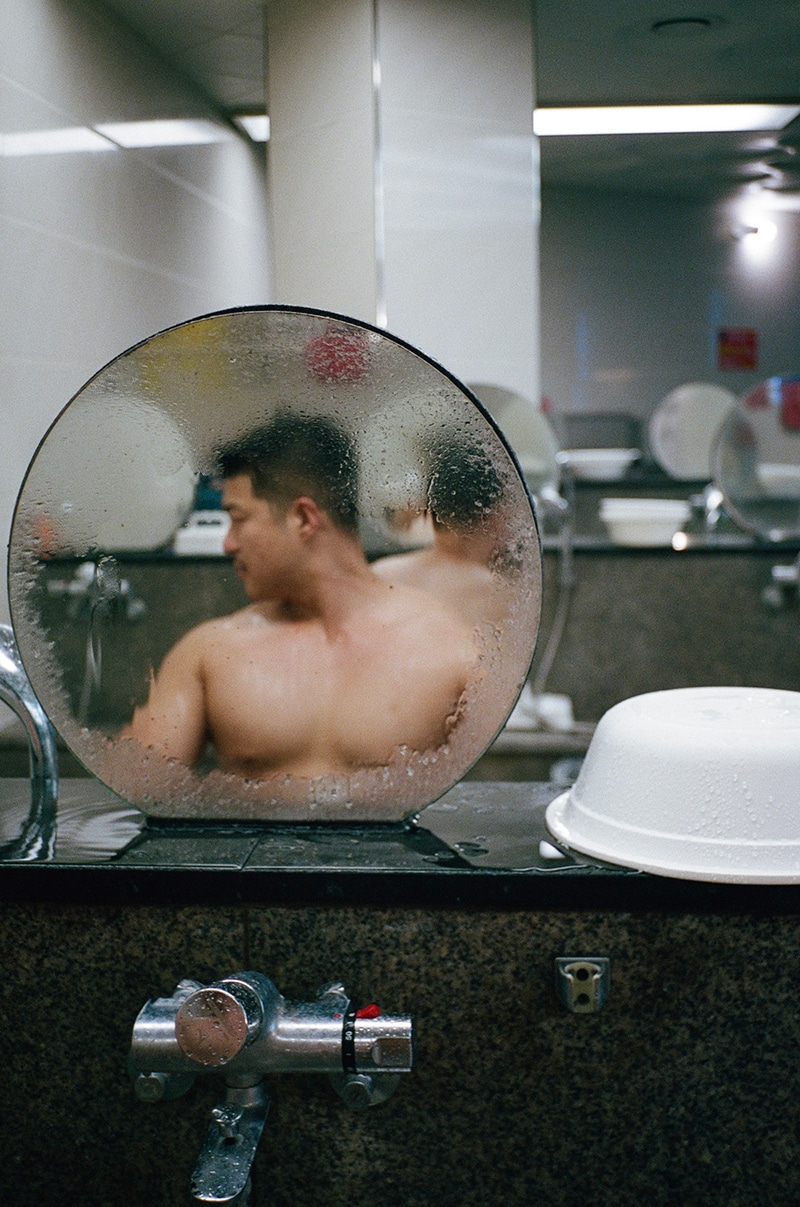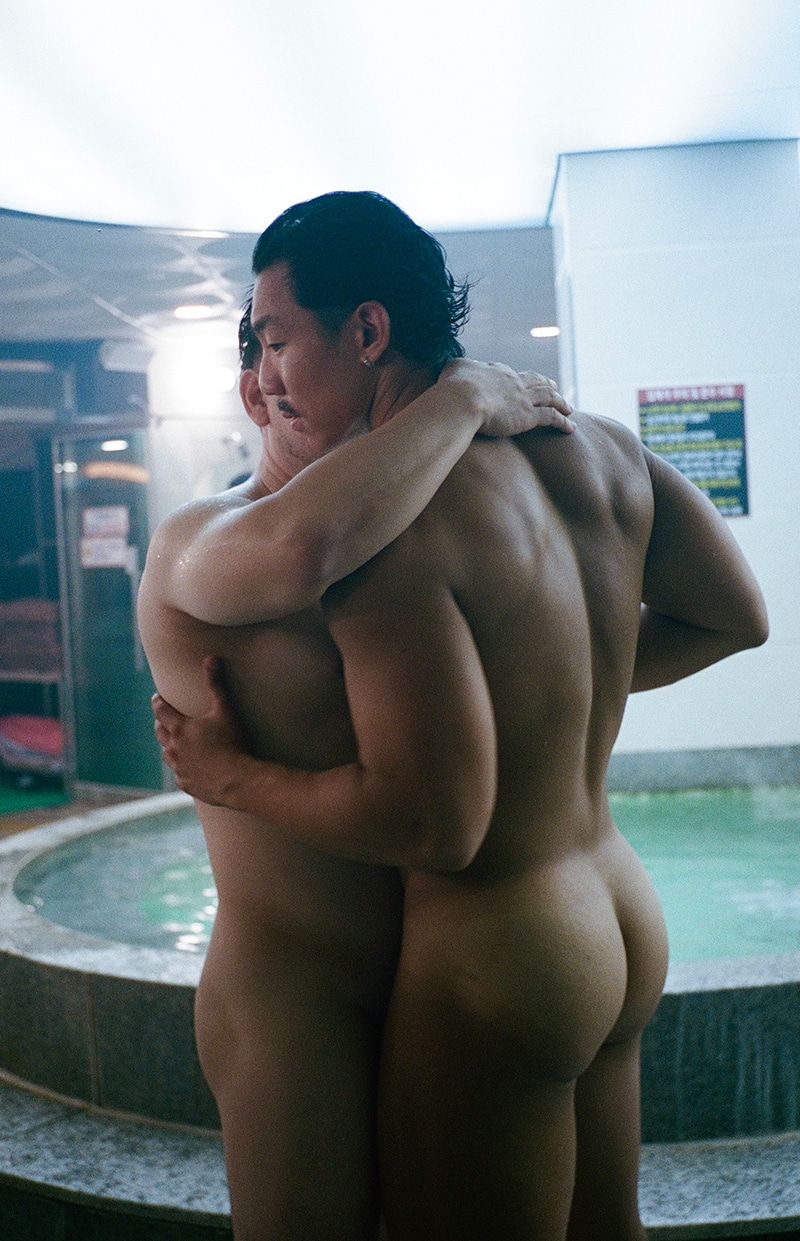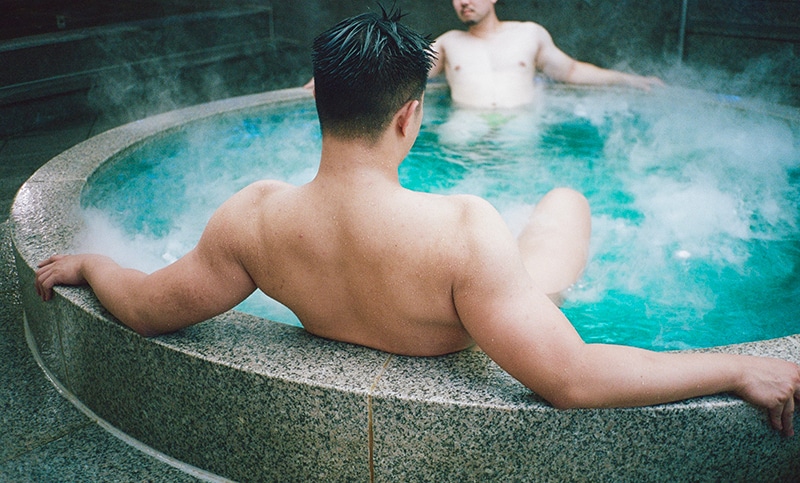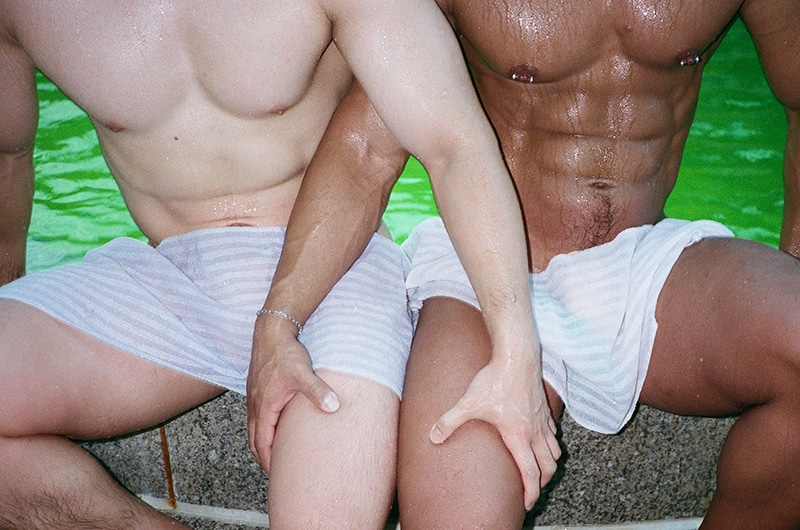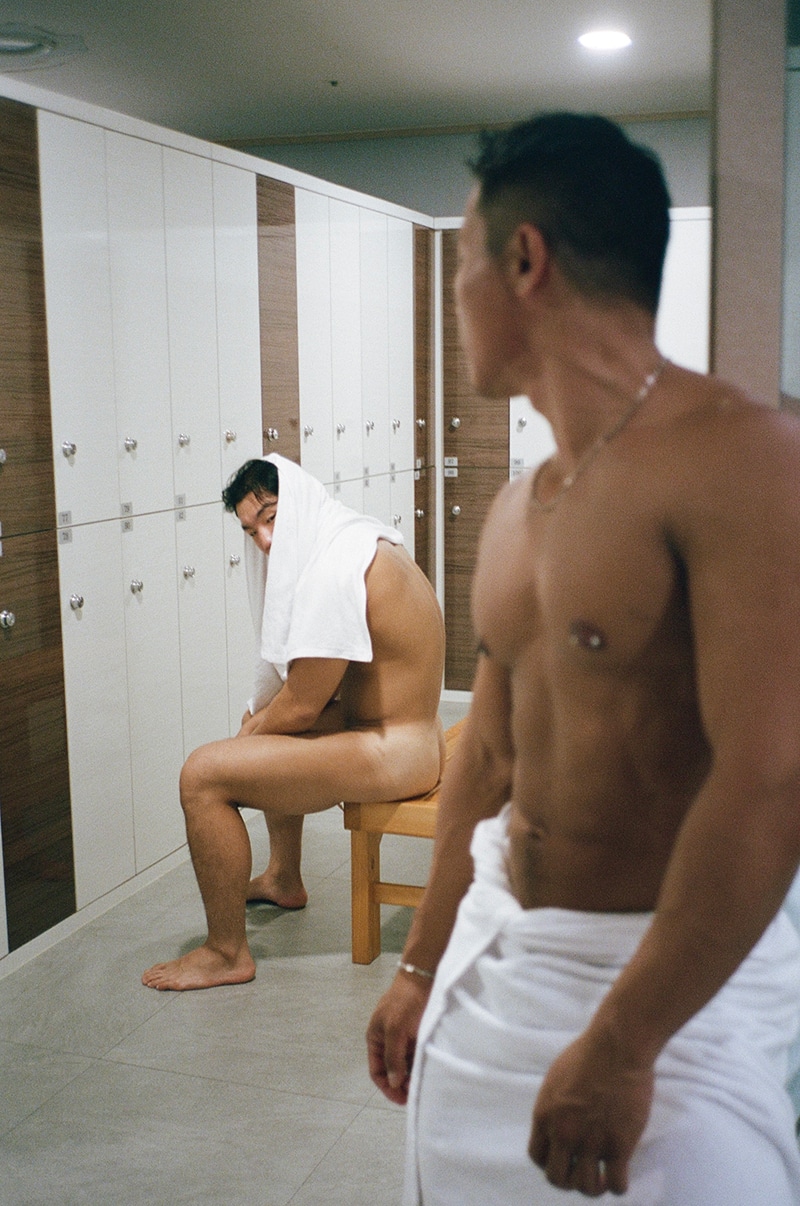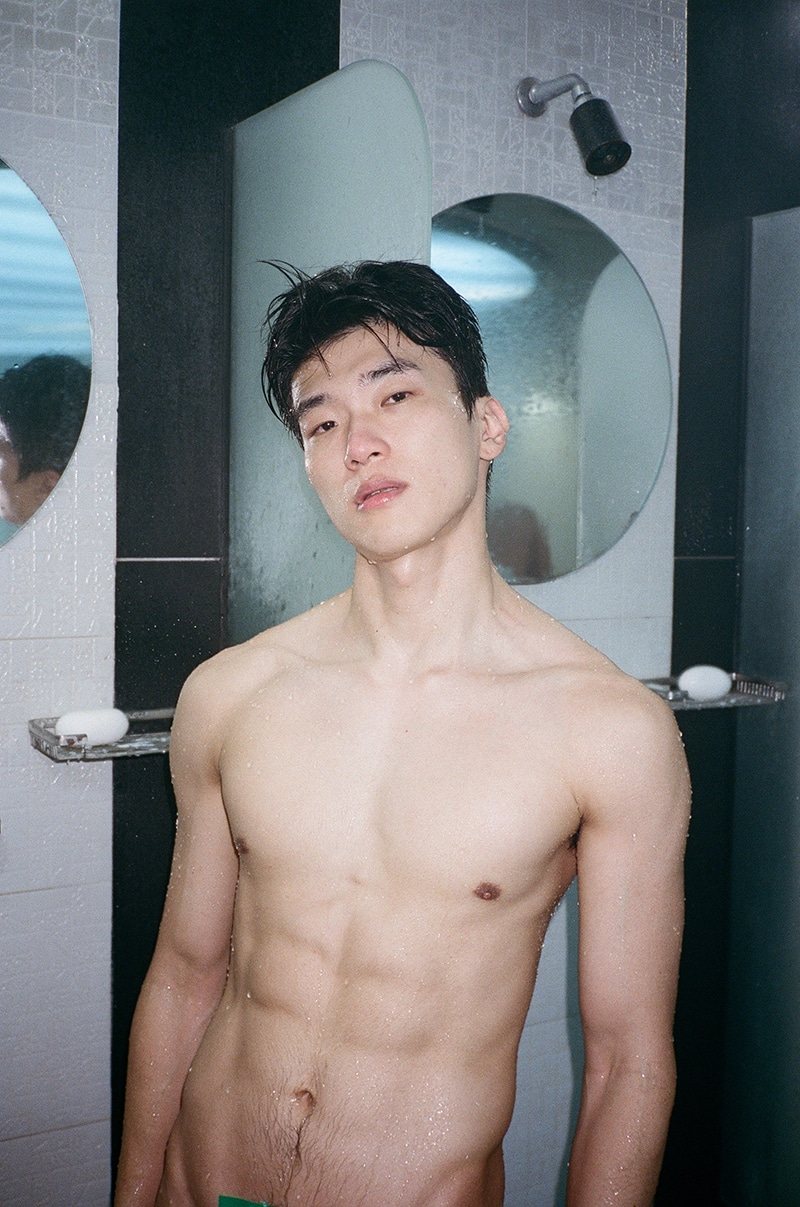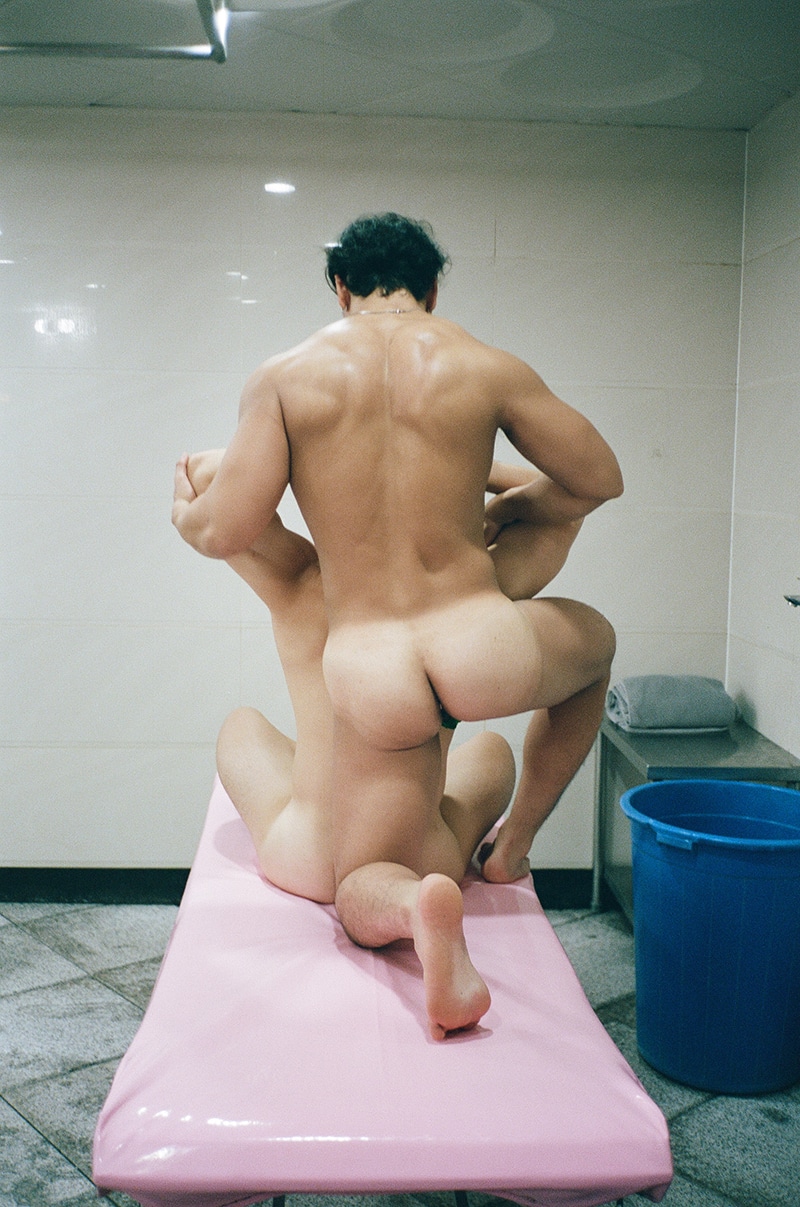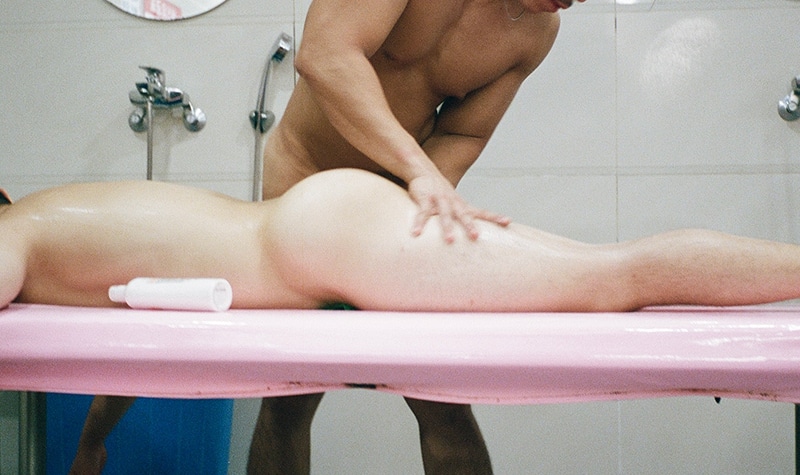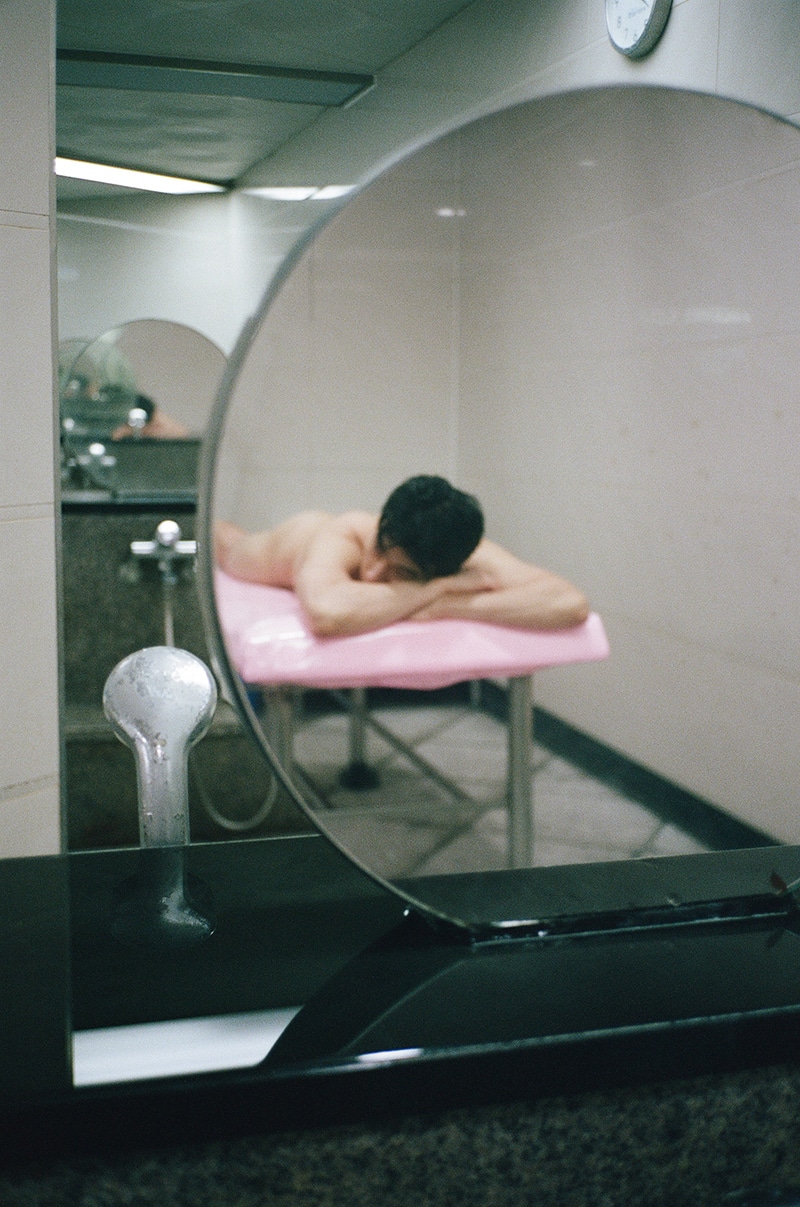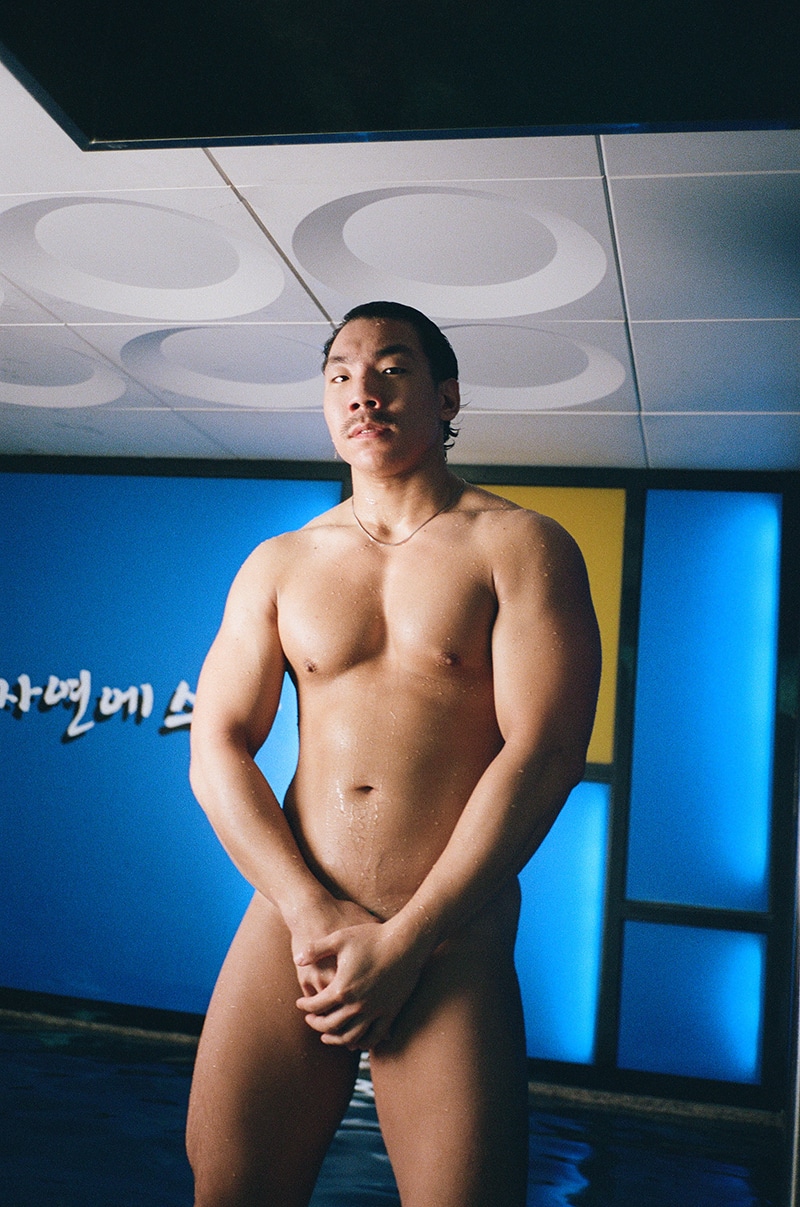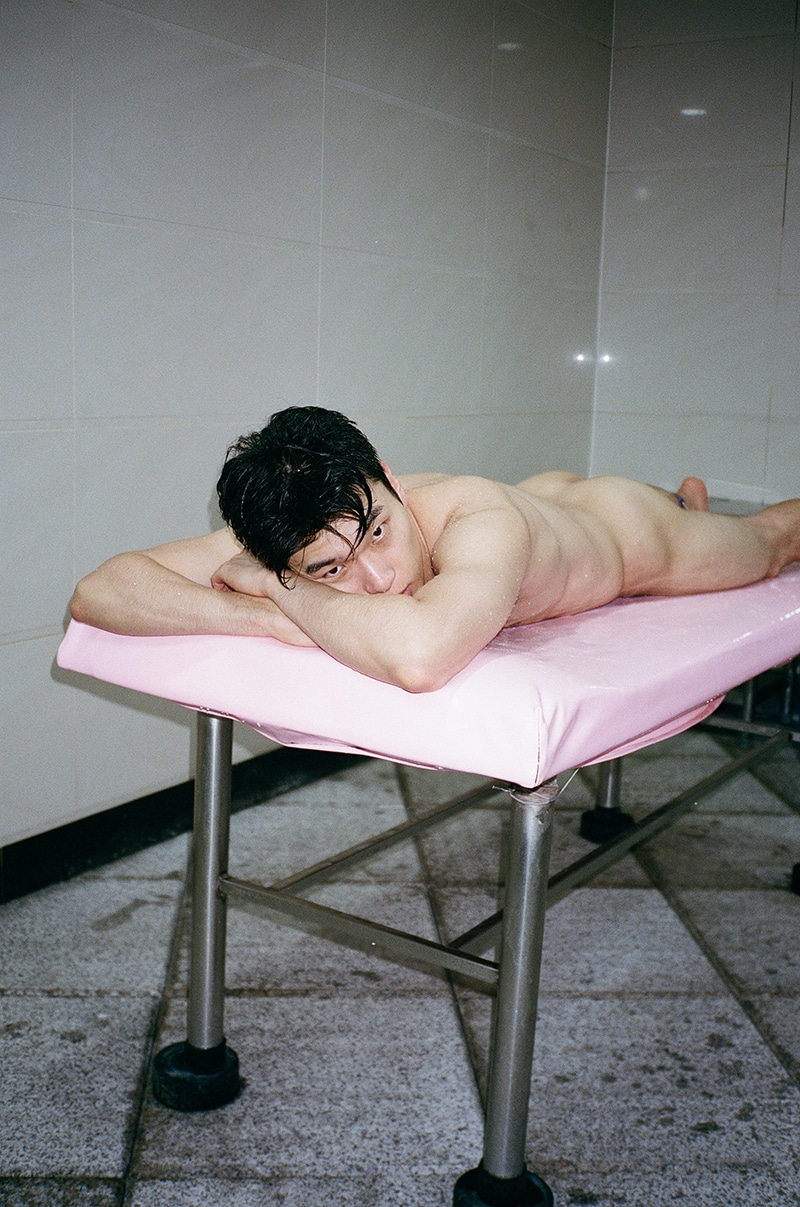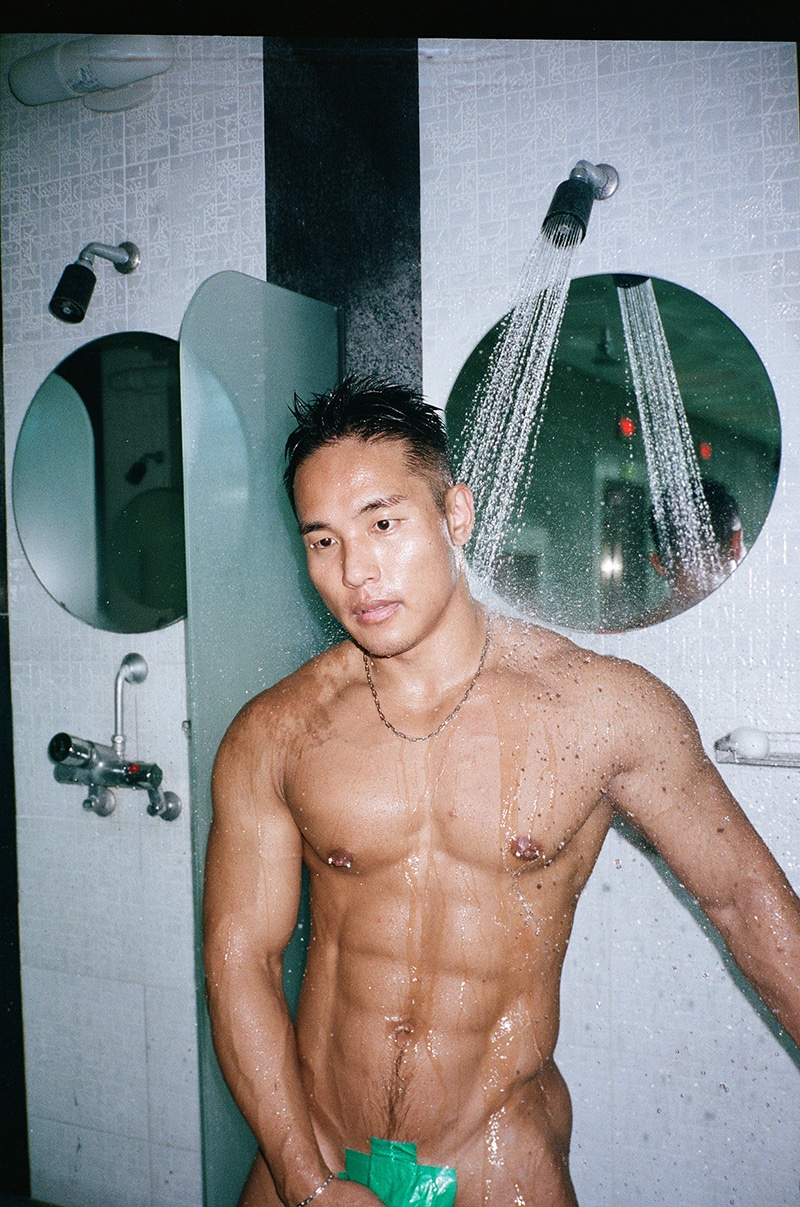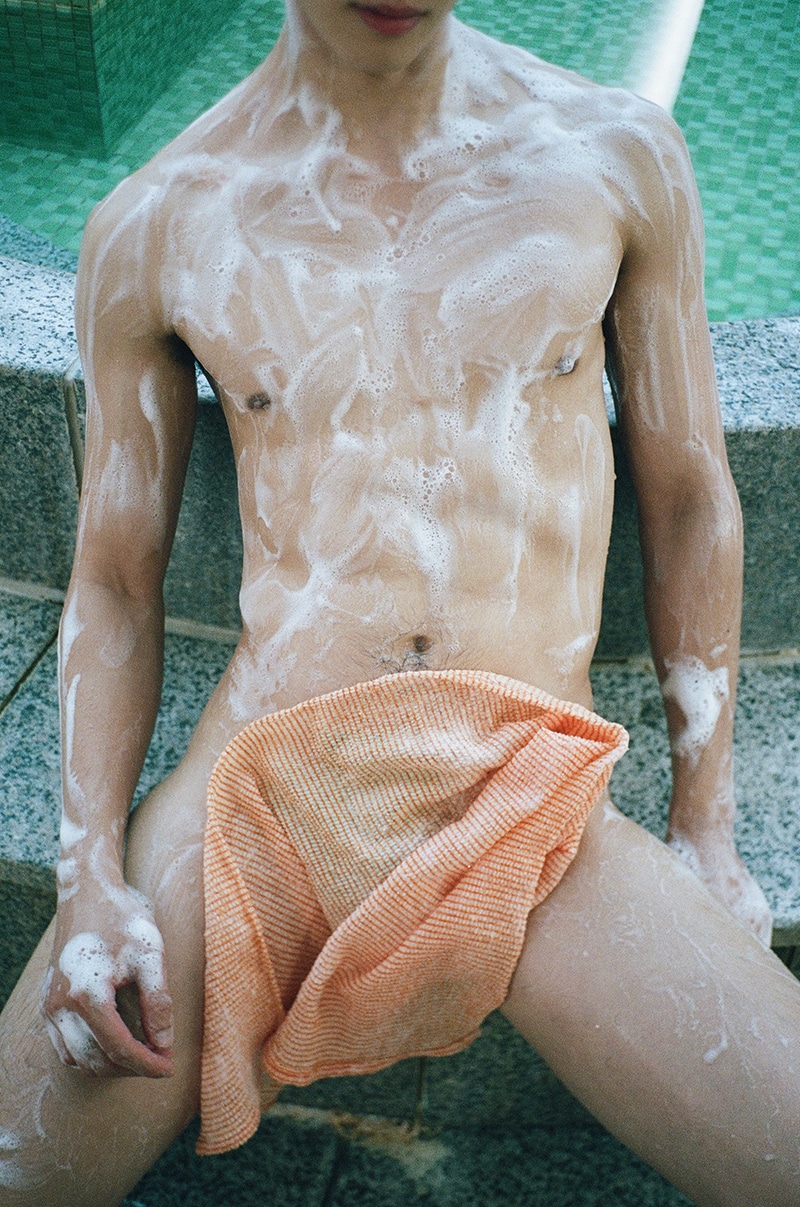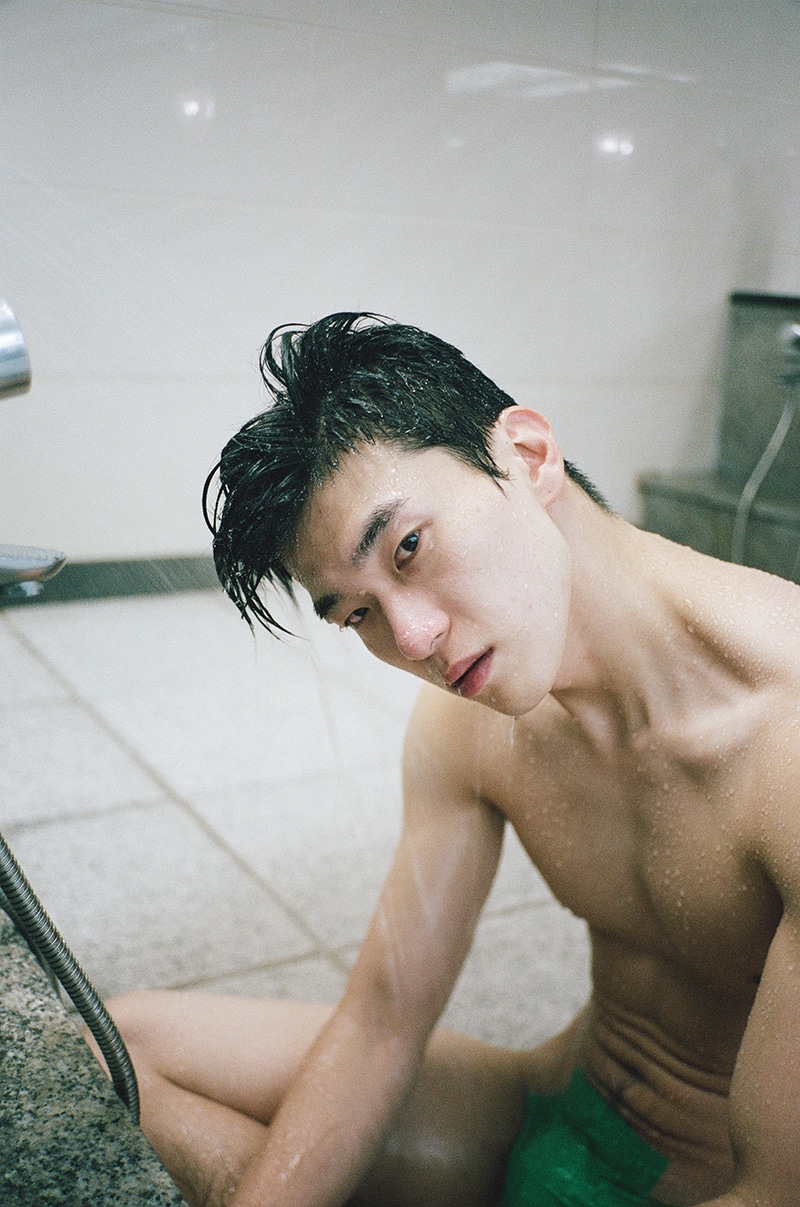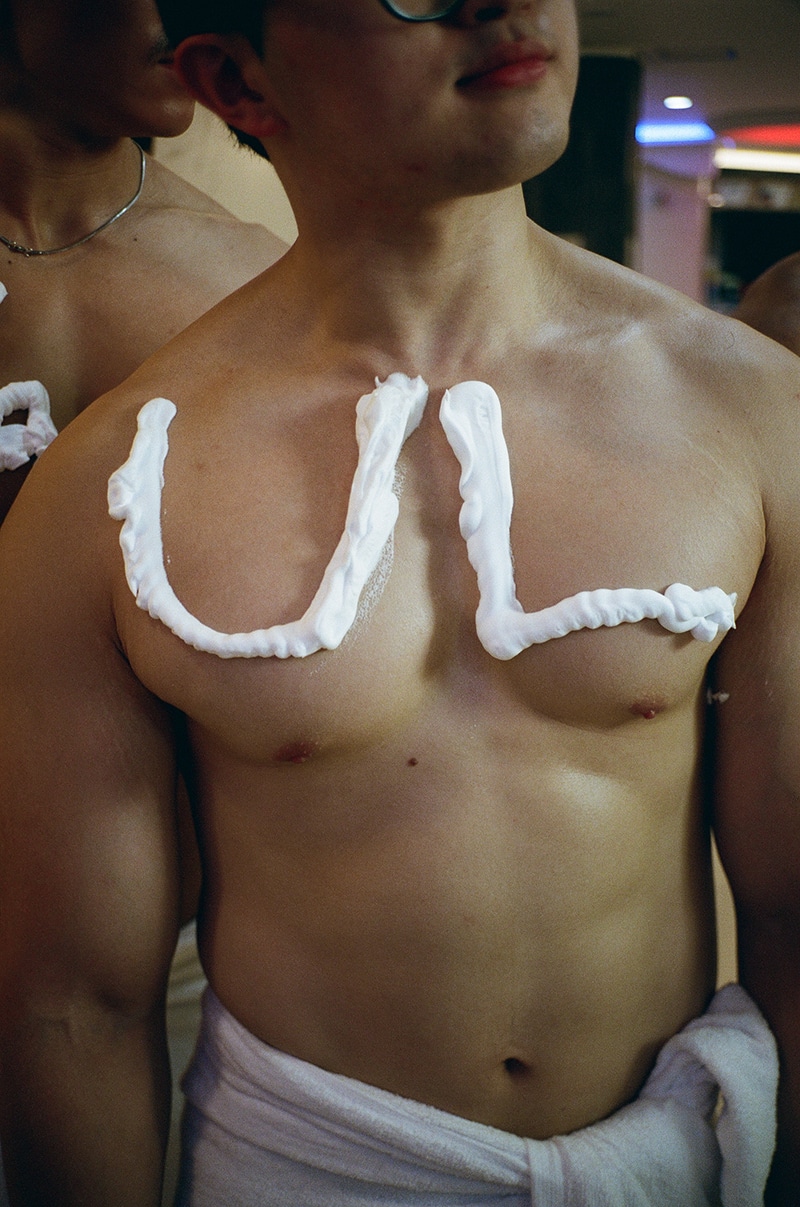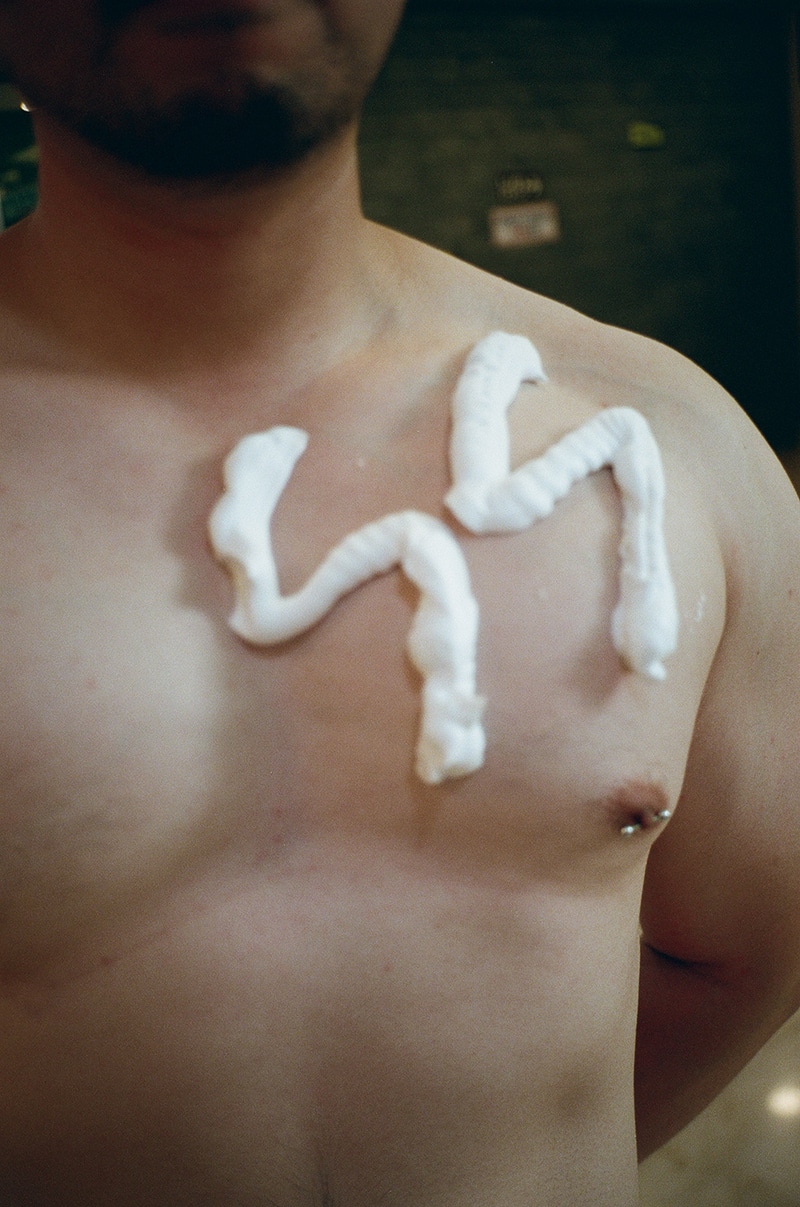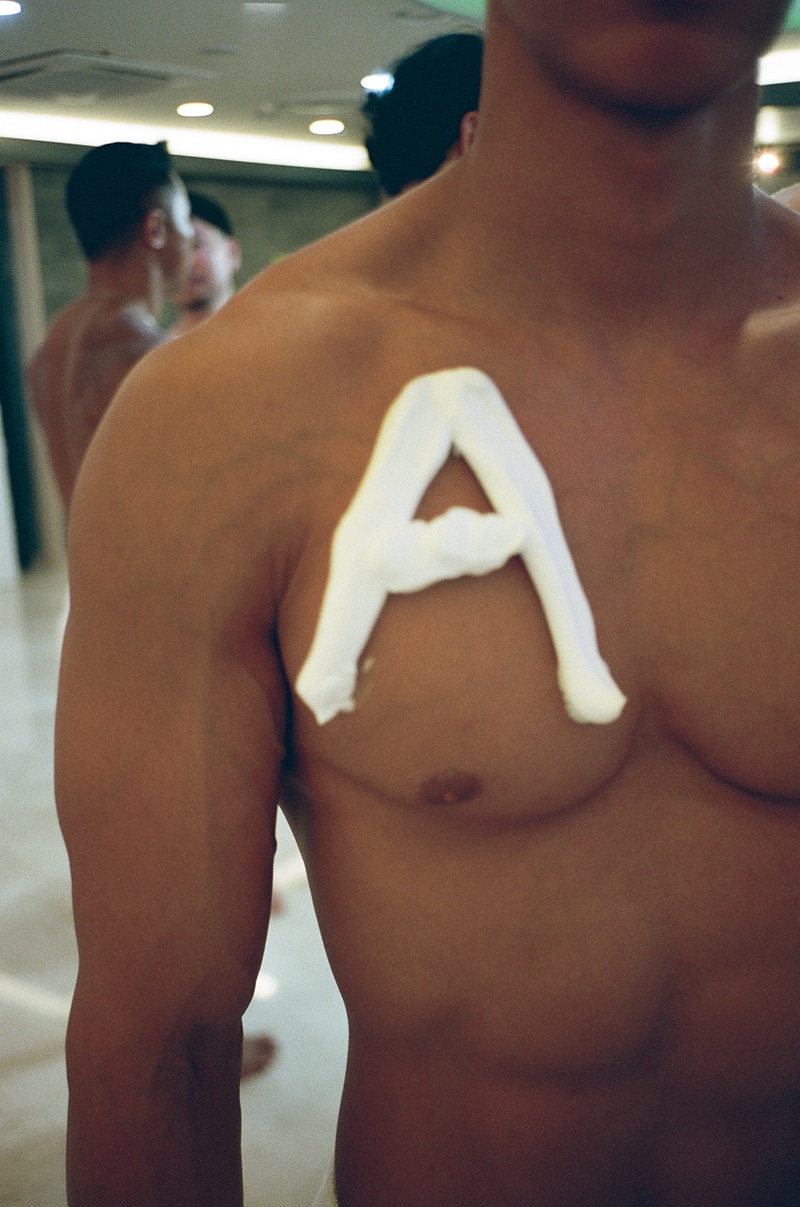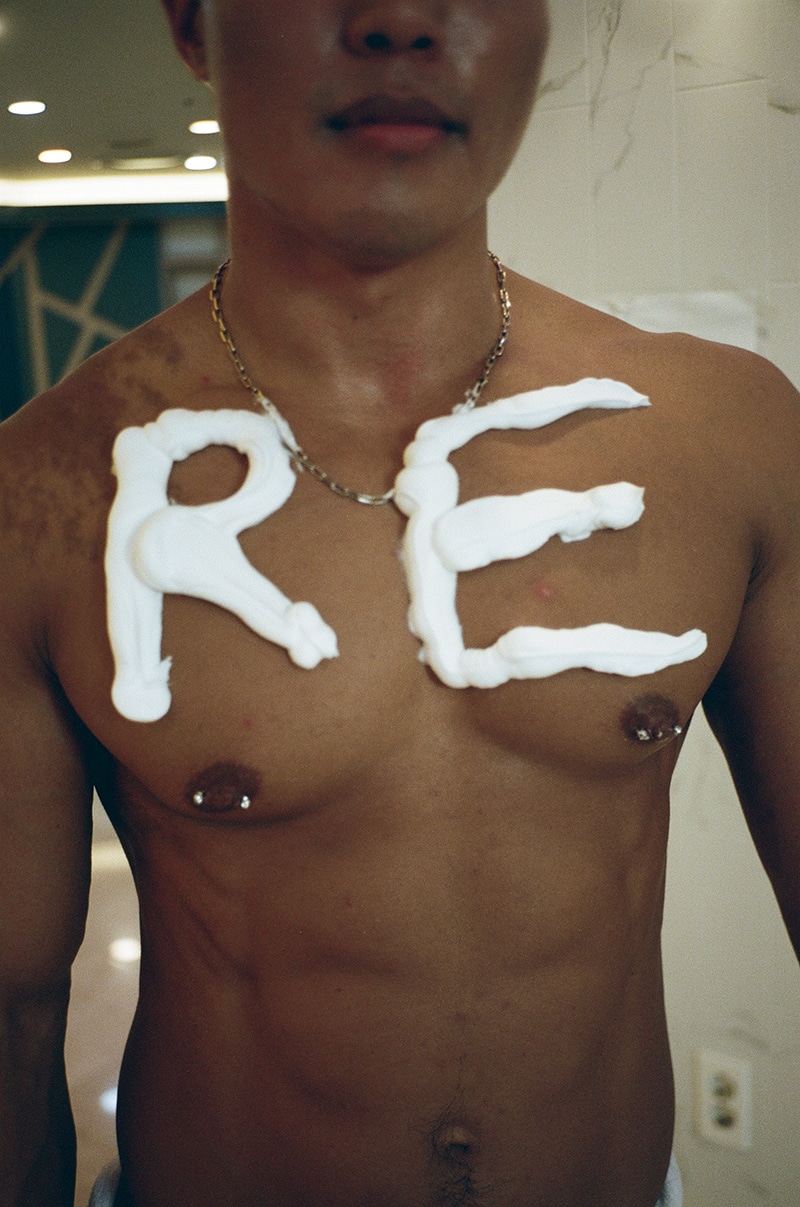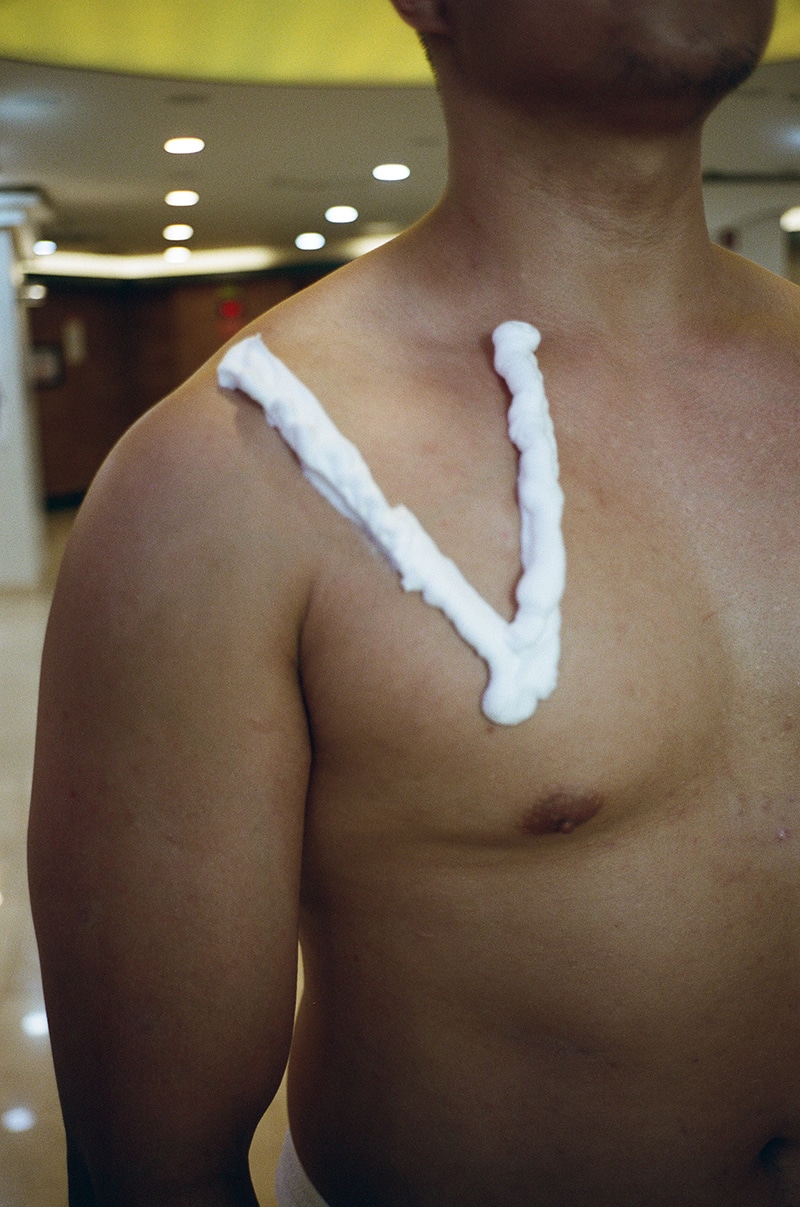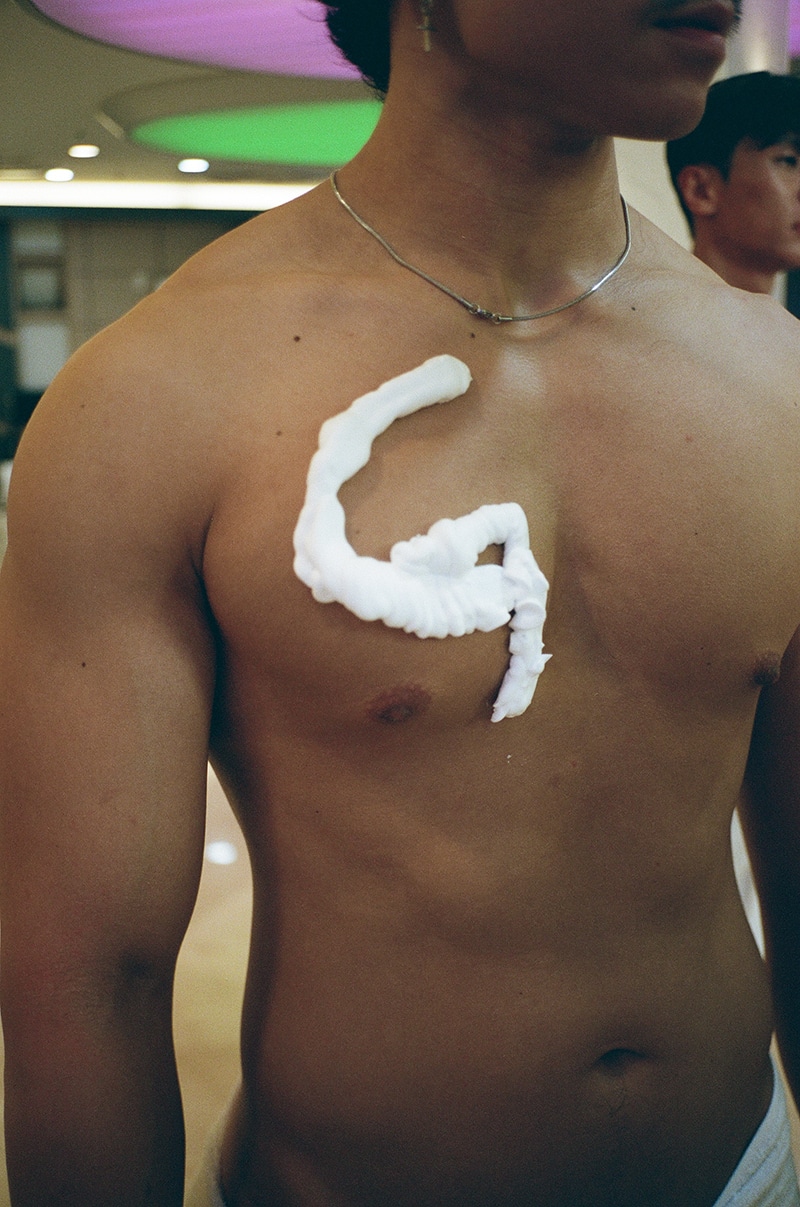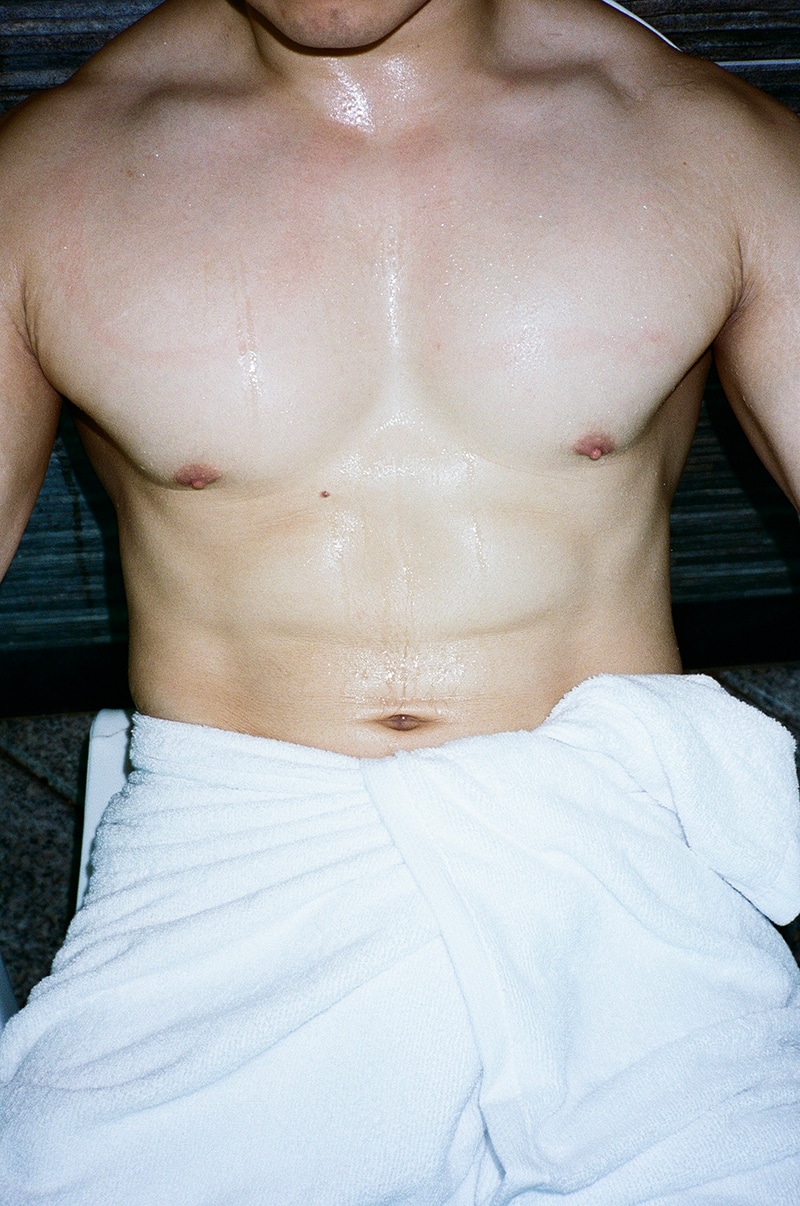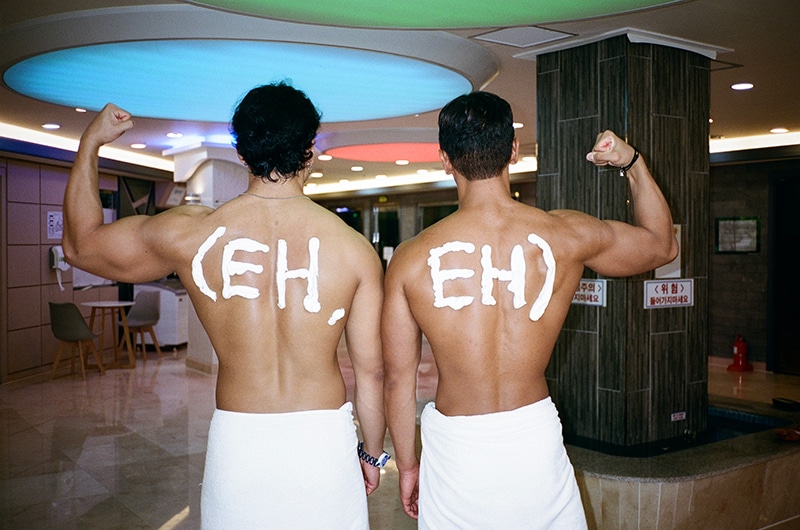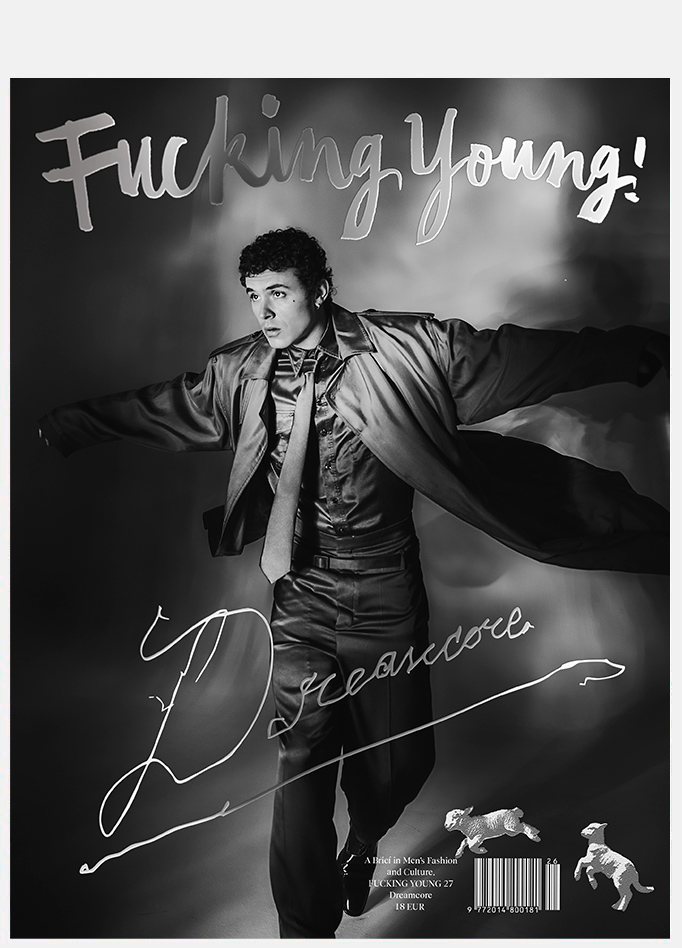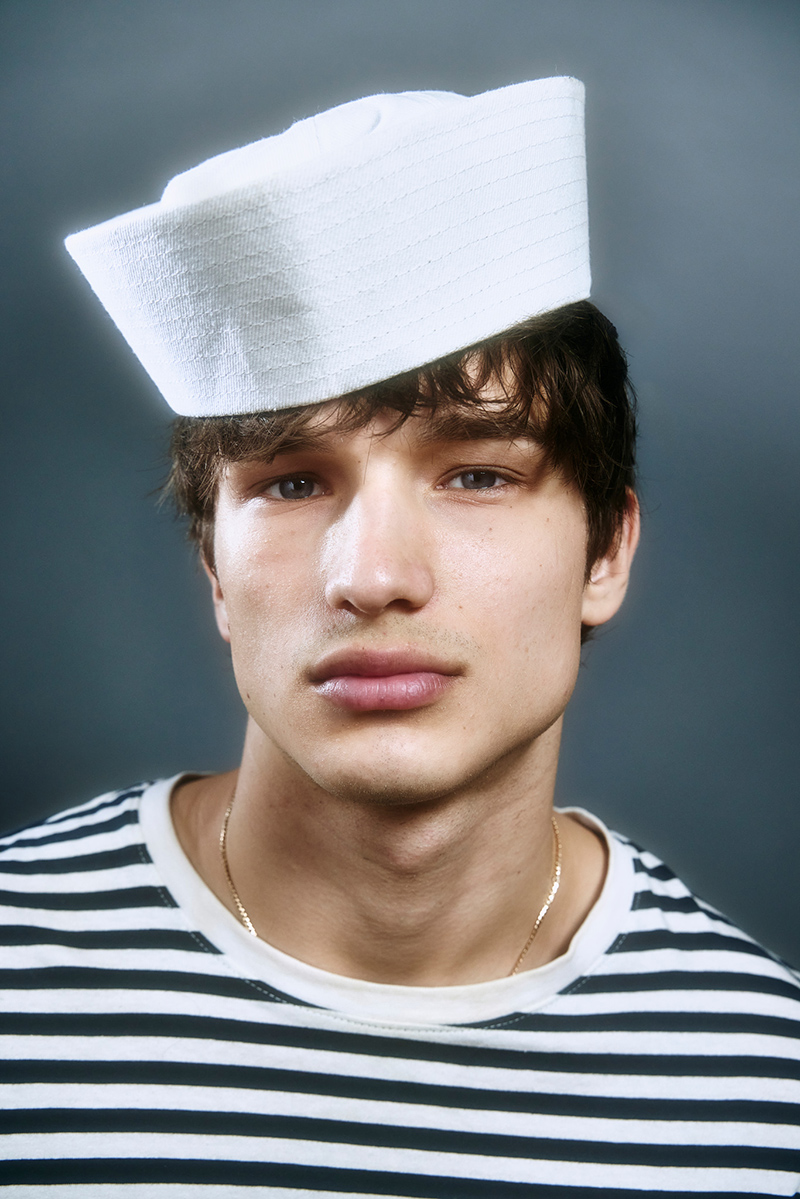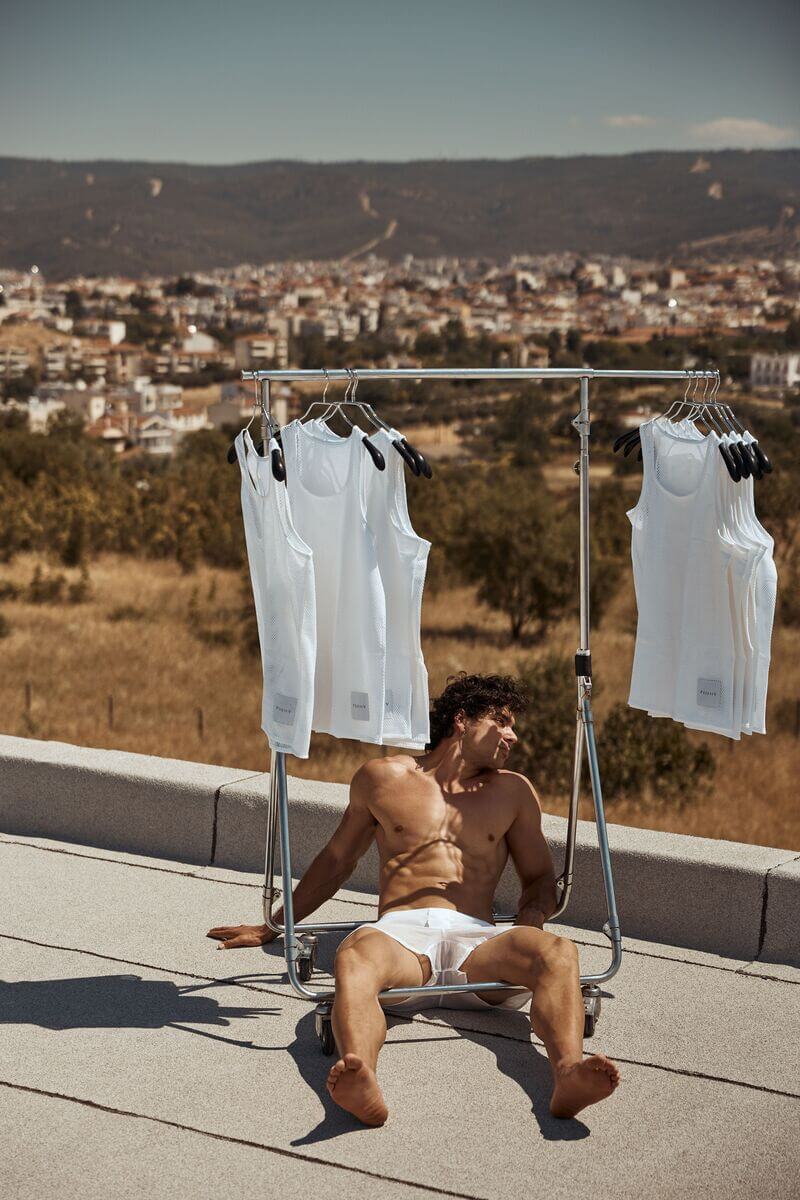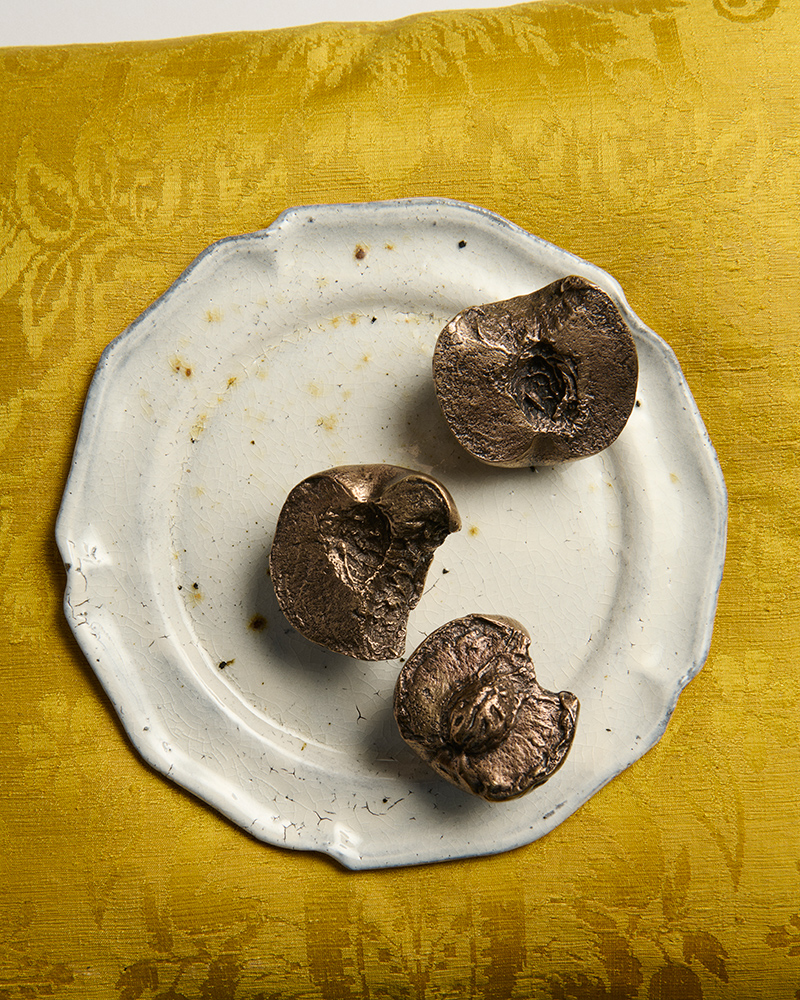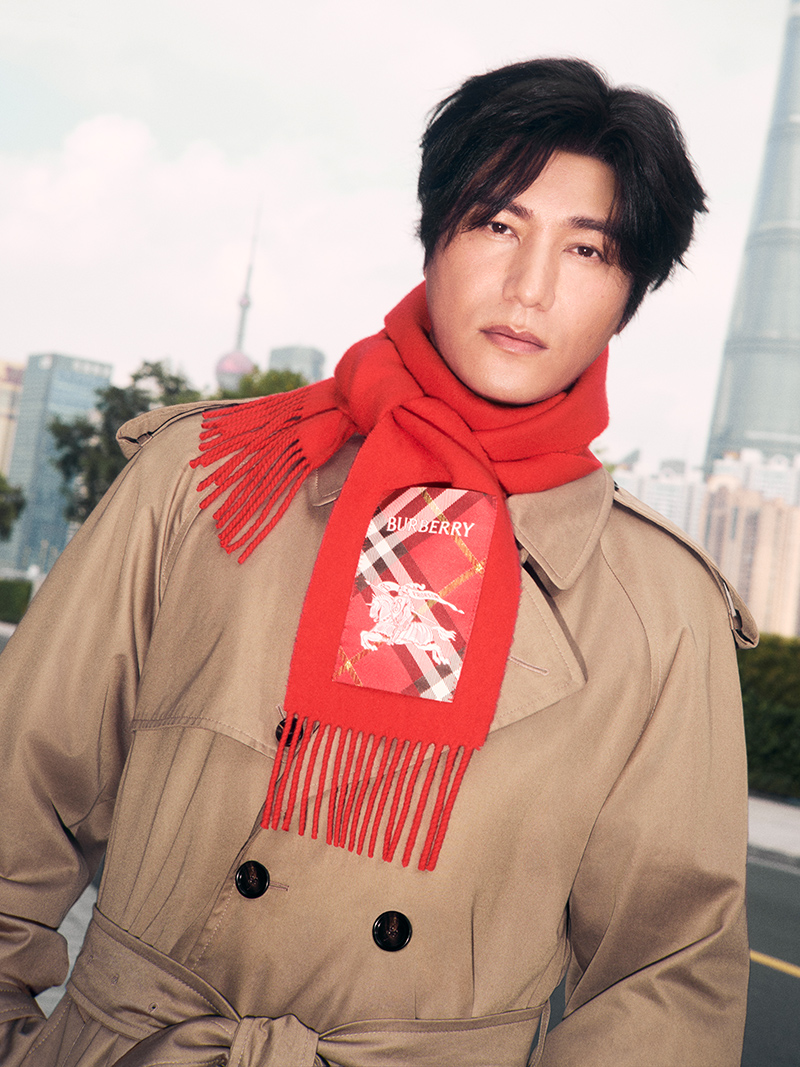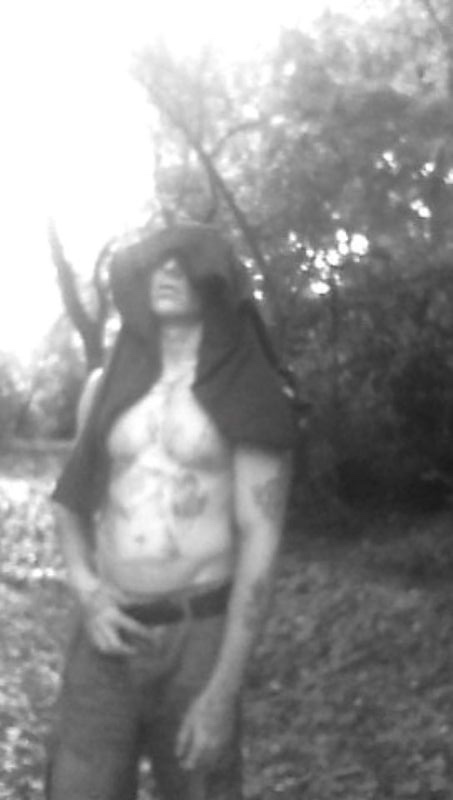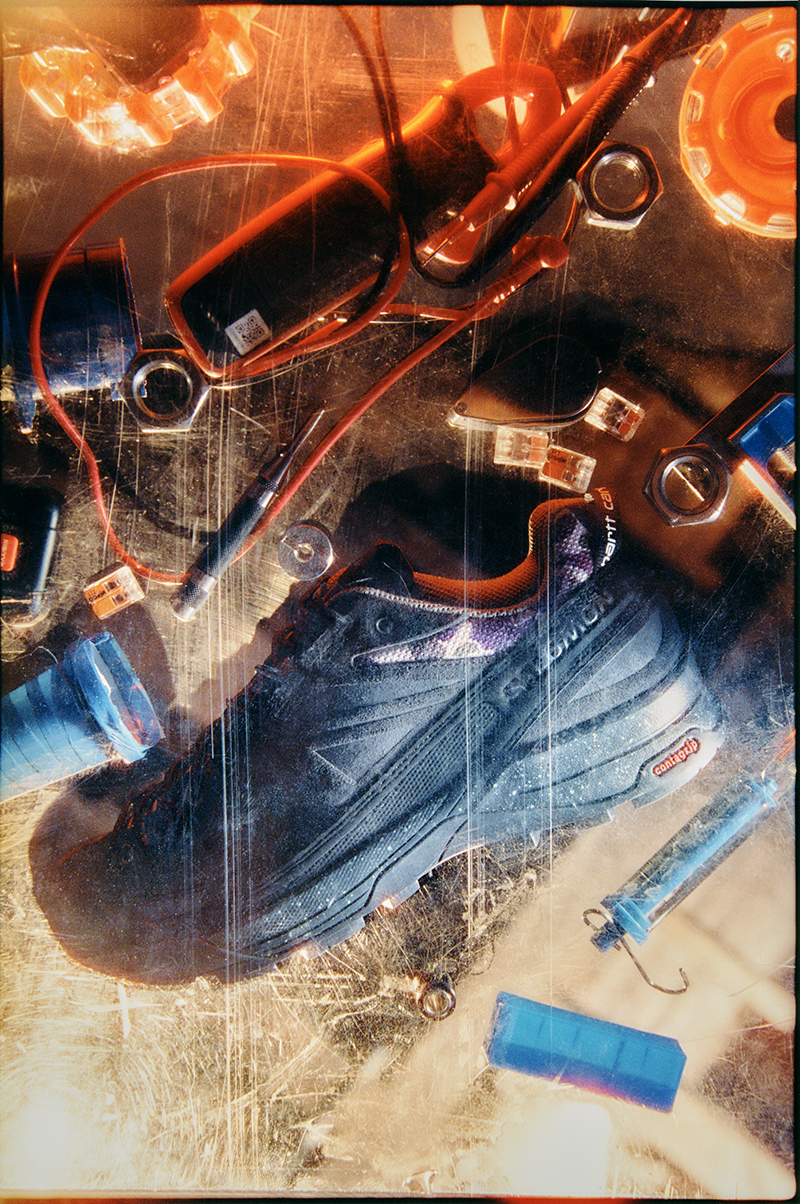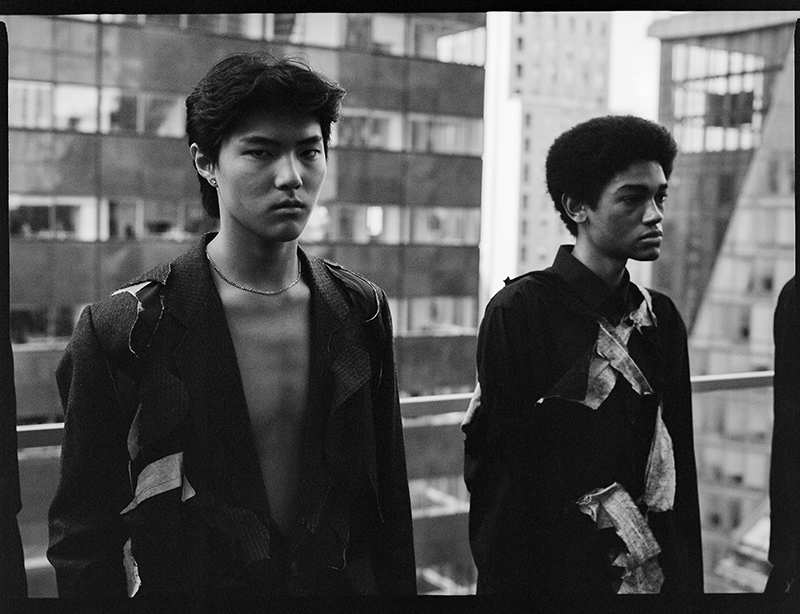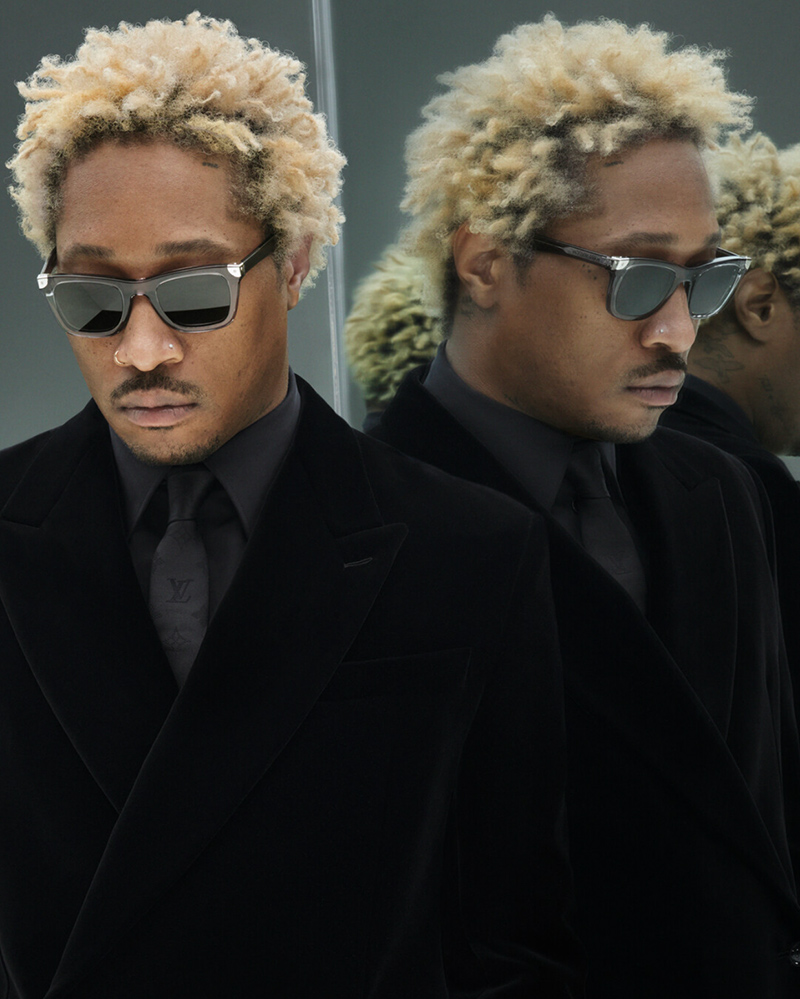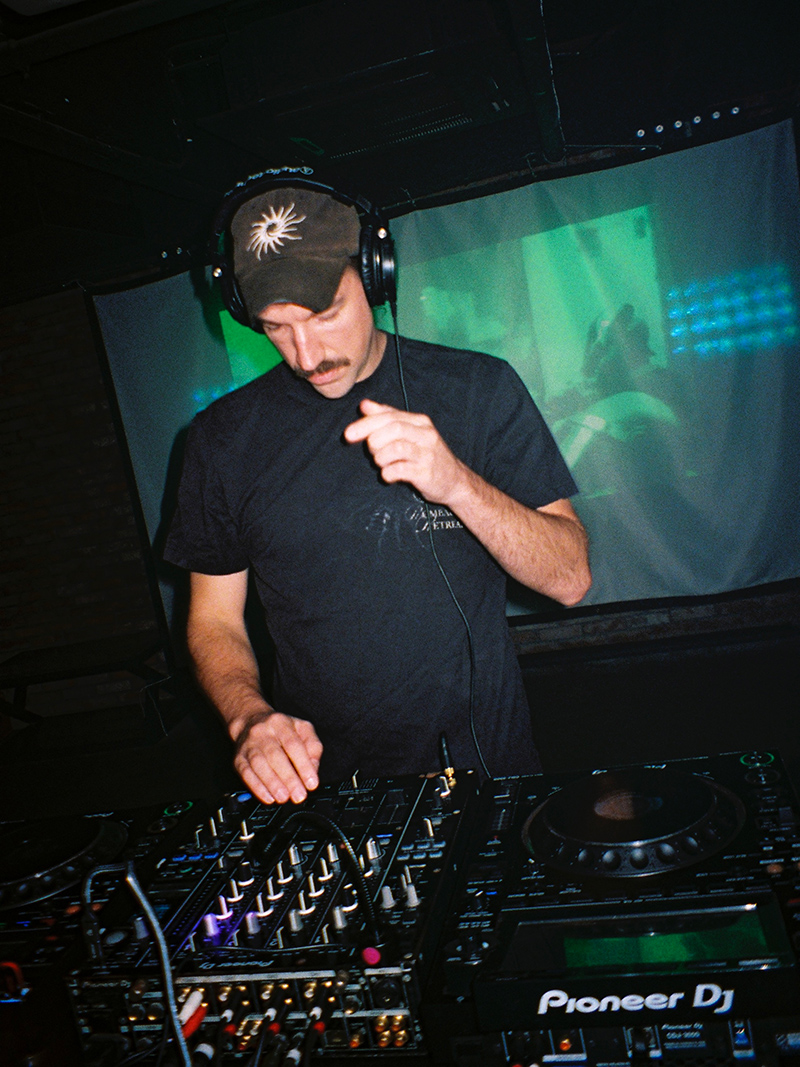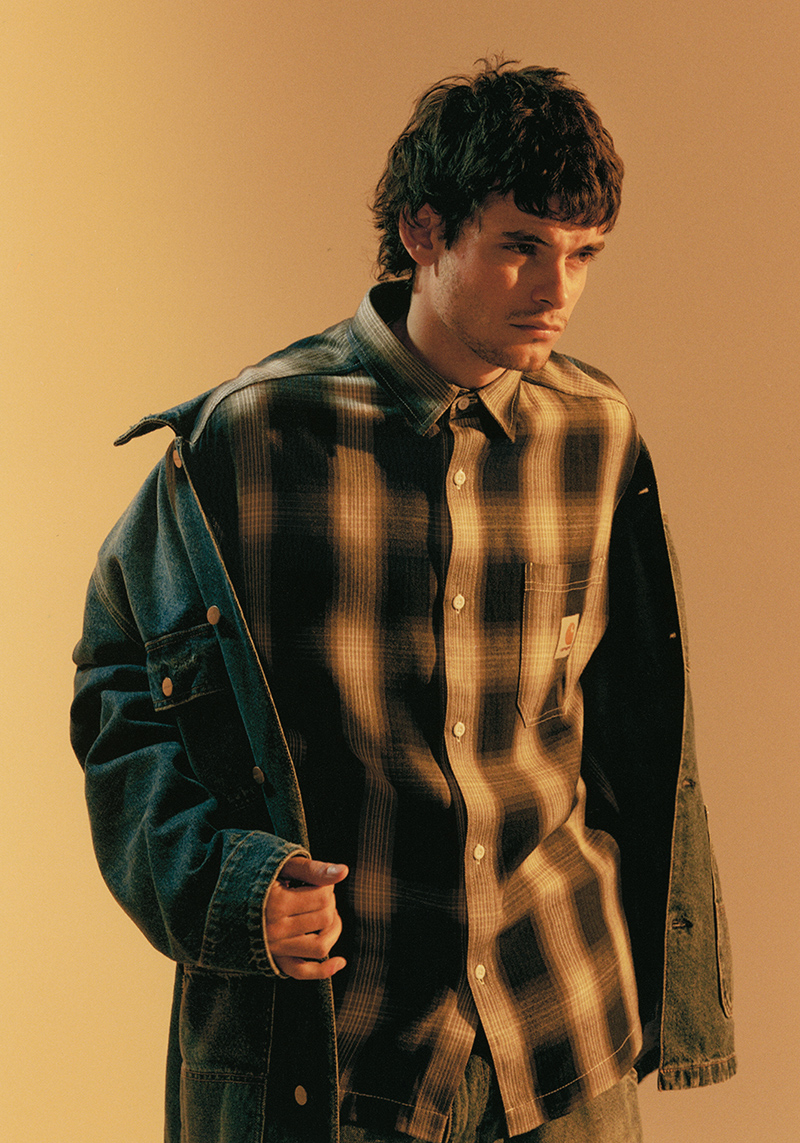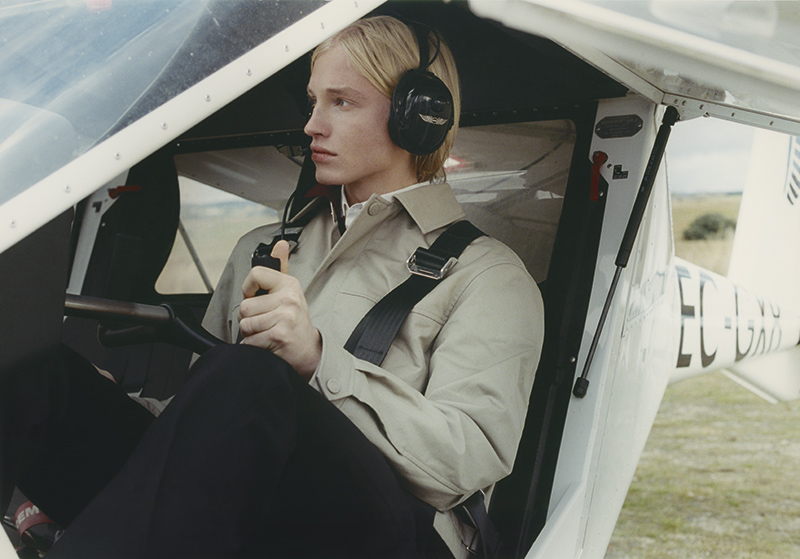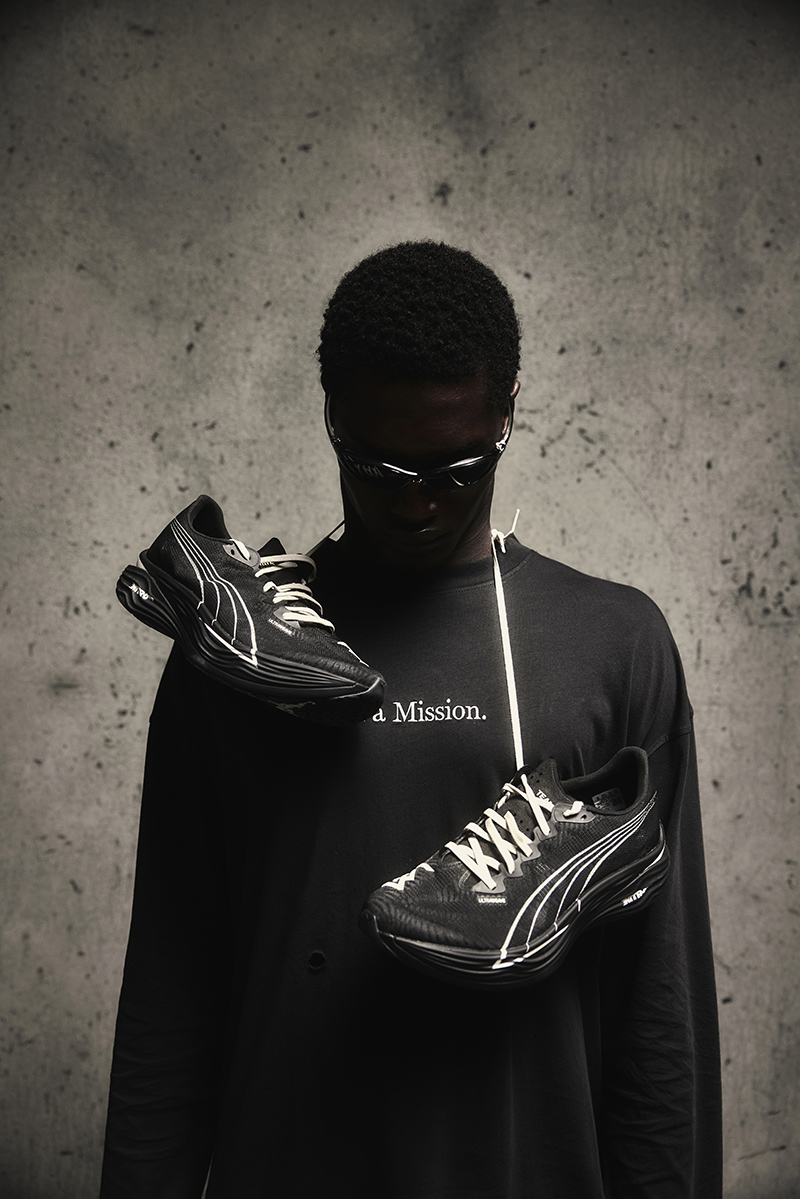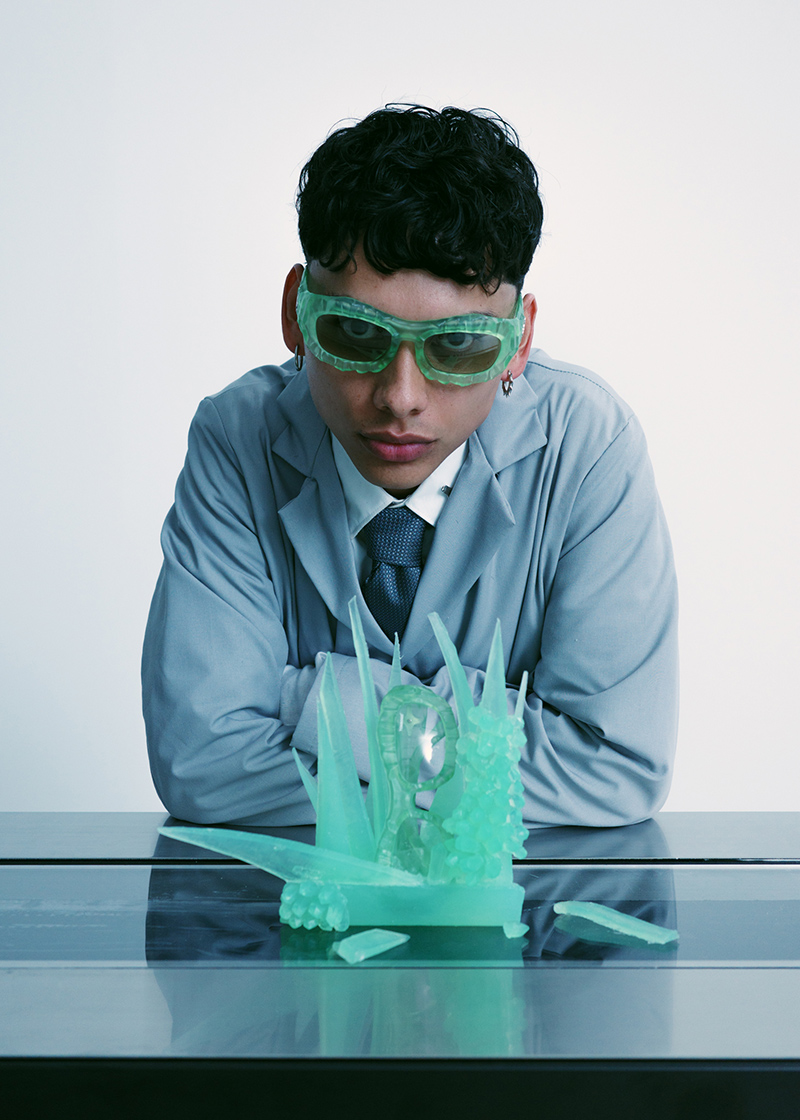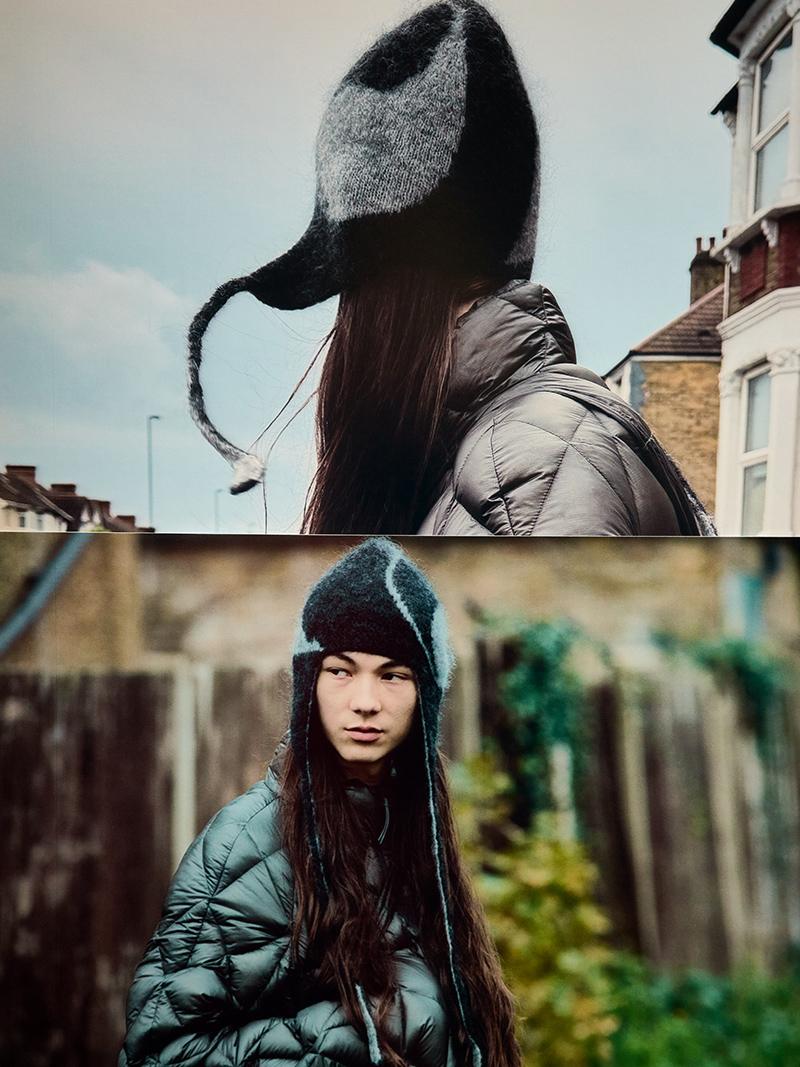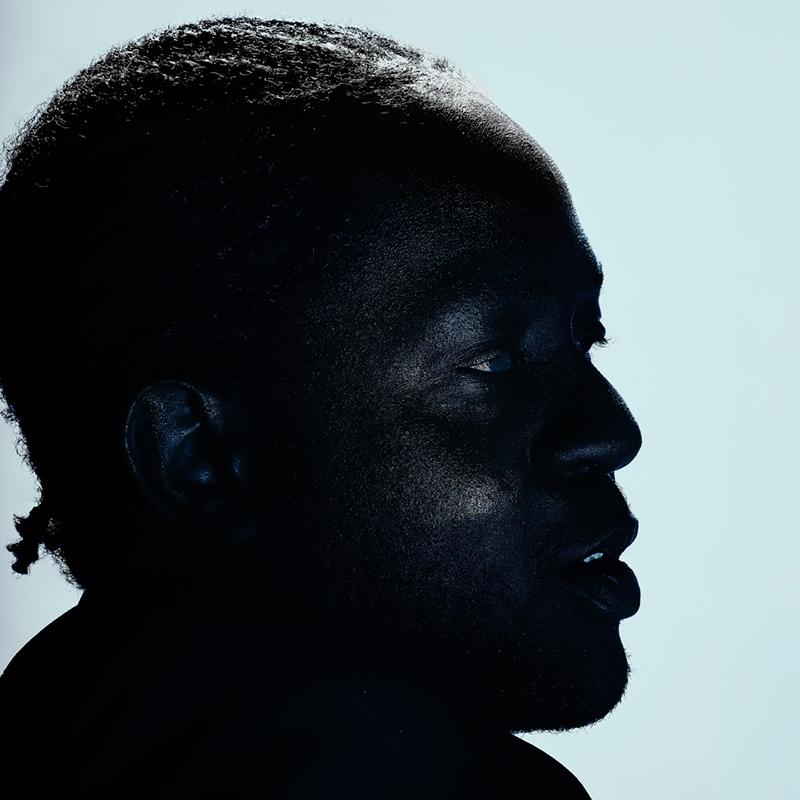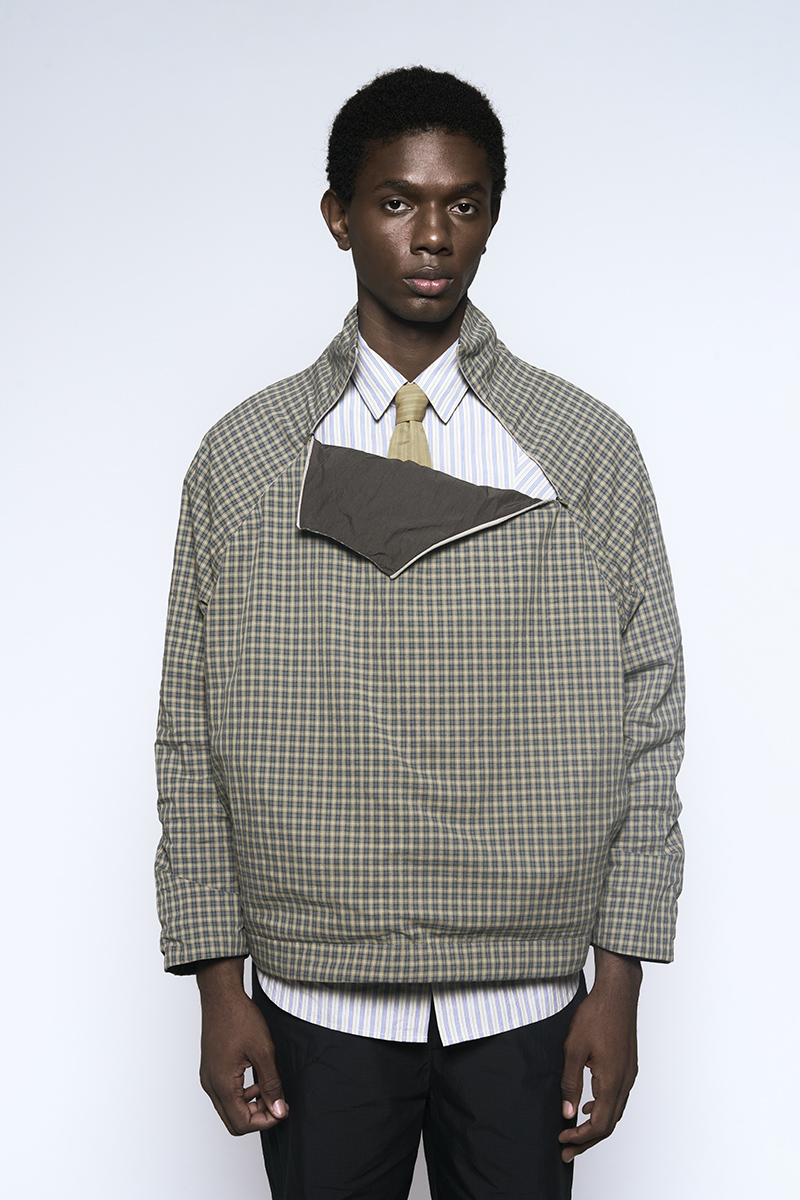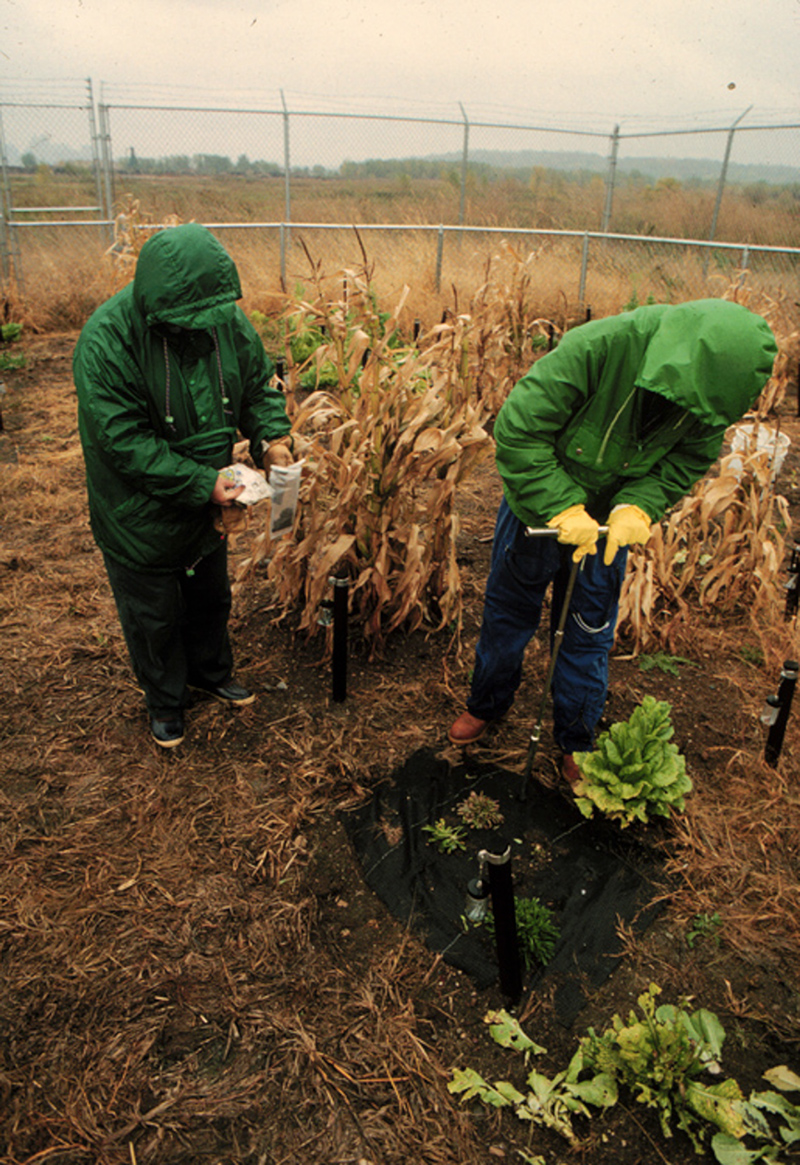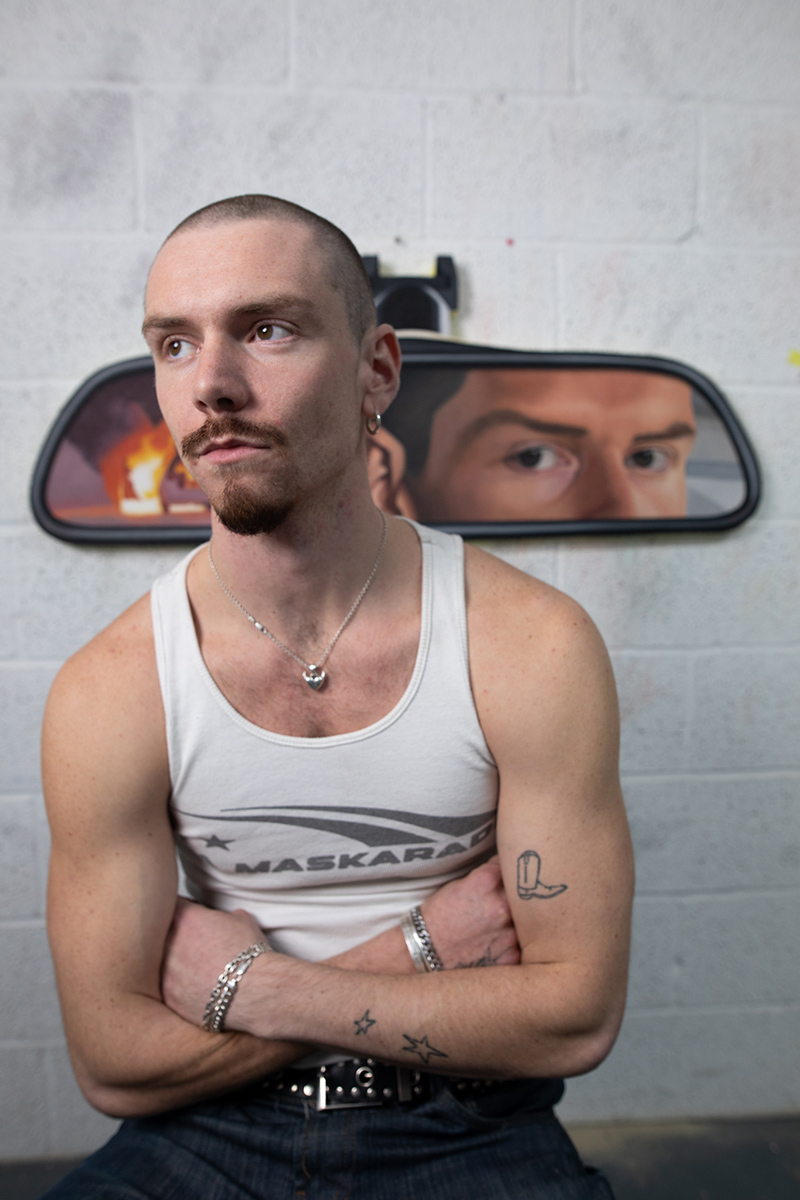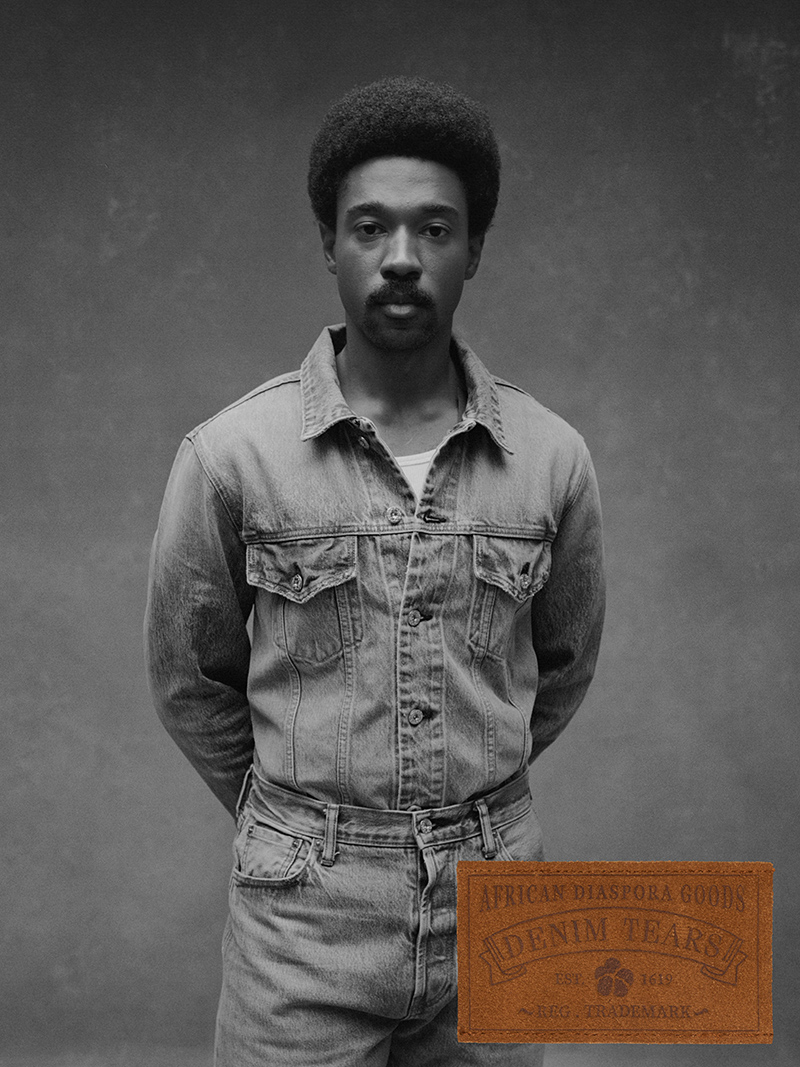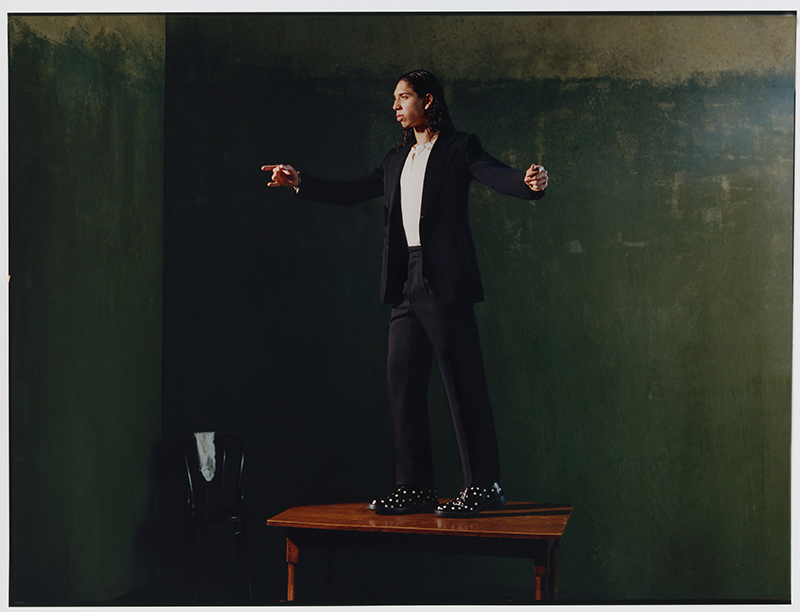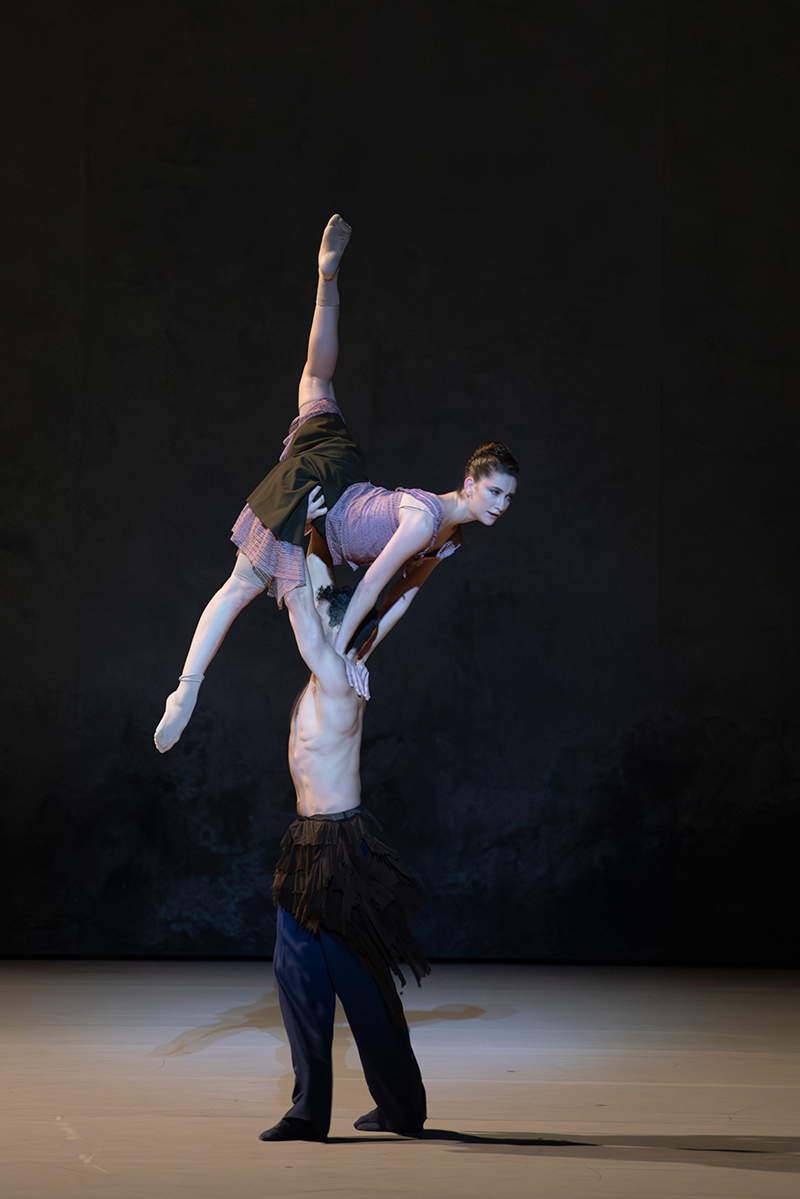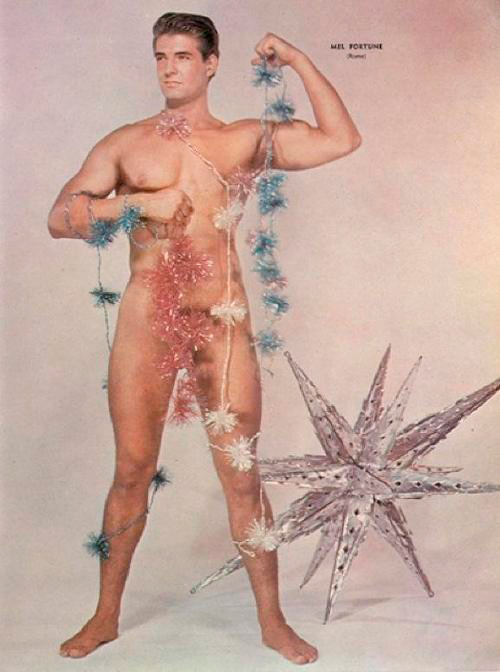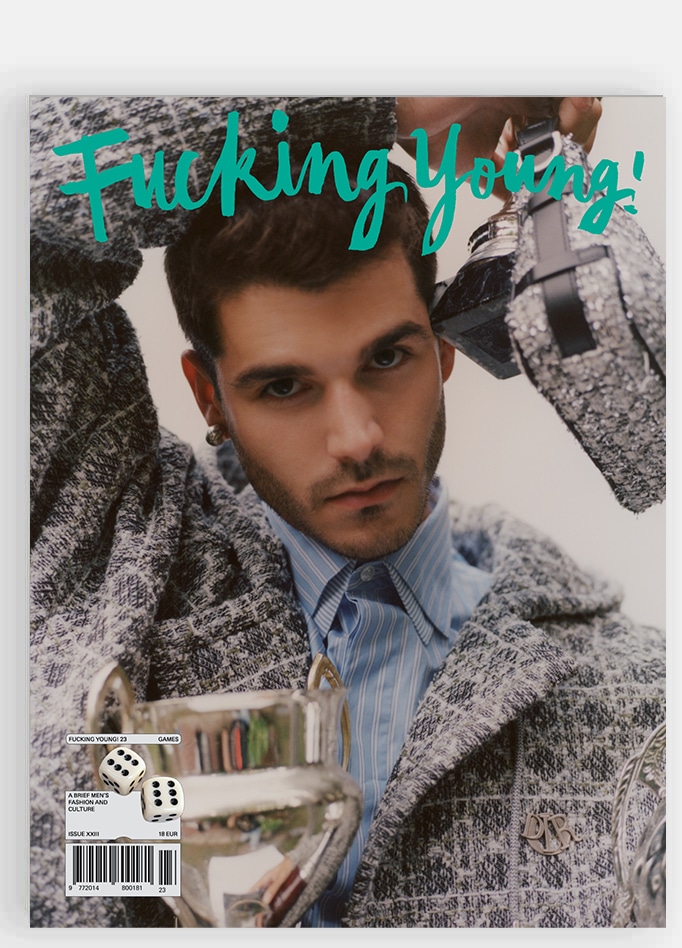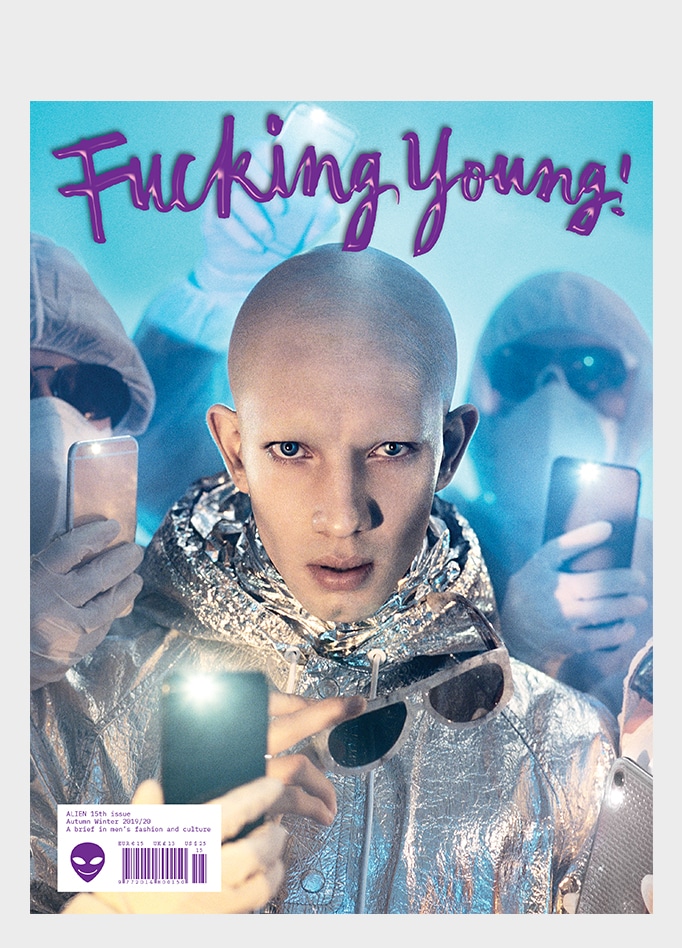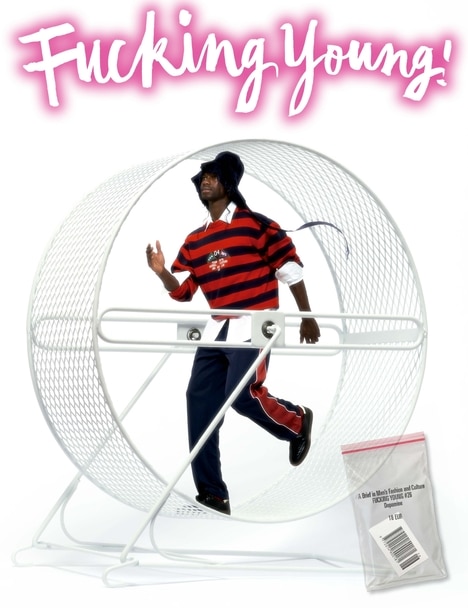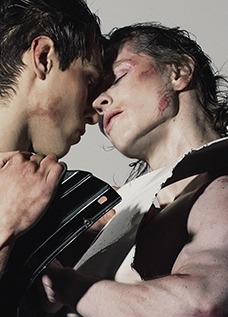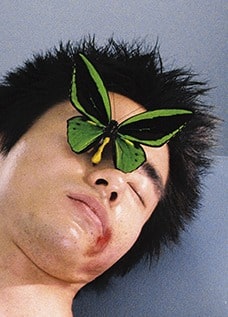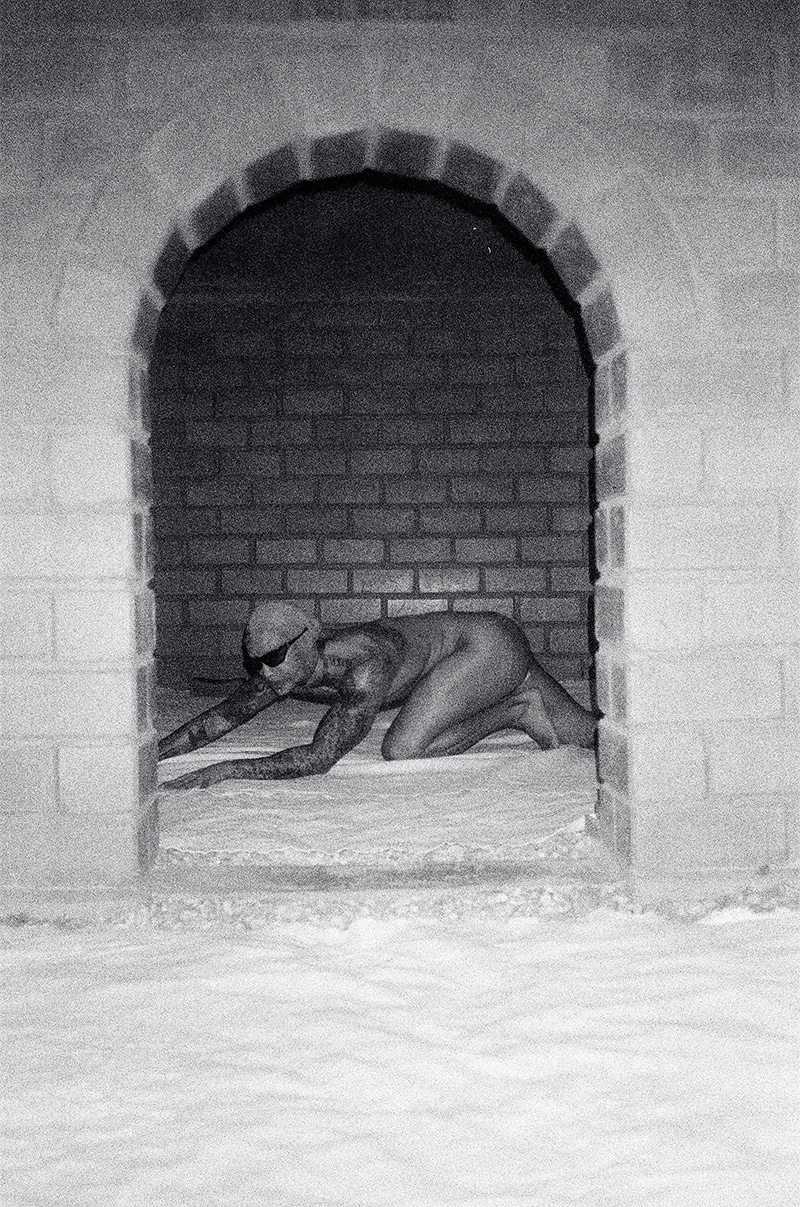
Kanmin Kim is a designer of many layers, seamlessly weaving fashion and photography into a rich tapestry of creative expression. A graduate of Coconogacco – the avant-garde Japanese fashion school helmed by Central Saint Martins alumnus Yoshikazu Yamagata – the South Korean designer honed his craft in Tokyo before returning to Seoul, where he’s now based. Although his primary focus remains fashion design, working with the brand 2000 Archives, his insatiable curiosity and restless artistic spirit has driven him to explore photography as a new medium of self-expression.
Deeply influenced by his Korean heritage and personal upbringing, Kanmin’s creative vision also draws from iconic artists like Nan Goldin and Jack Pierson. Each photograph is a raw and intimate exploration of identity, memory, and storytelling, as well as a natural extension of his fashion ethos. A synergy is evident in his latest photo series, a sub-project for the music video VULGARESS (Eh, Eh) by DJ Netgala. Blending unfiltered closeness and cinematic elegance, Kanmin Kim has created an array of visuals that reflect his layered artistry while exploring the sensuality and sexuality of male nudity in jjimjilbangs, South Korean bathhouses.
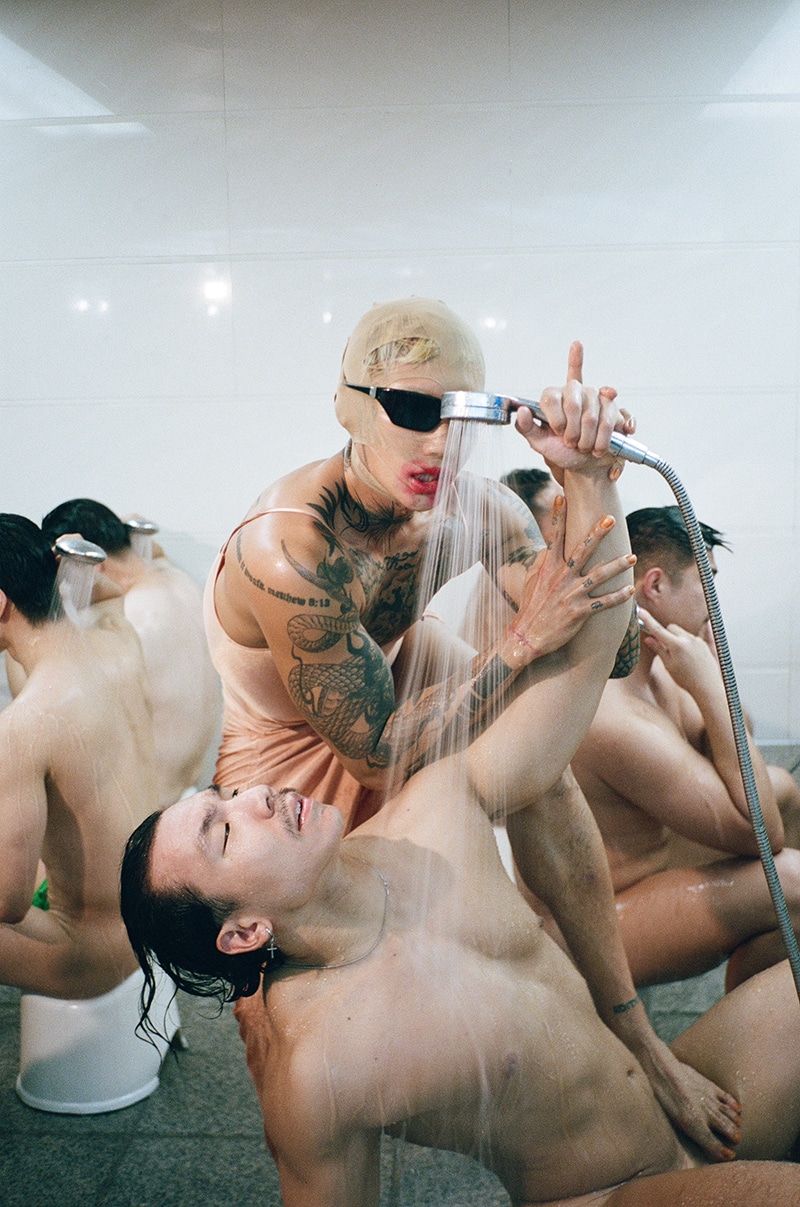
After studying fashion for years, you have delved into photography now. What prompted this?
The turning point for me came during my time in the military. In that confined environment, I felt a strong urge to express myself creatively. Eventually, I decided to take the plunge during my leave. With very little time and a tight budget, I ended up taking charge of everything—from styling to photography. That experience was what first led me to start taking photos.
How has your background in fashion design influenced your approach to photography?
I think my journey into photography also stems from my work in fashion research. During a critique session with one of my professors, I presented a project where I photographed male figures that embodied the aesthetics I admire. That project marked the beginning of my photography journey. I also draw a lot of inspiration from the countless fashion photographs I’ve studied over the years, particularly in terms of composition and lighting.
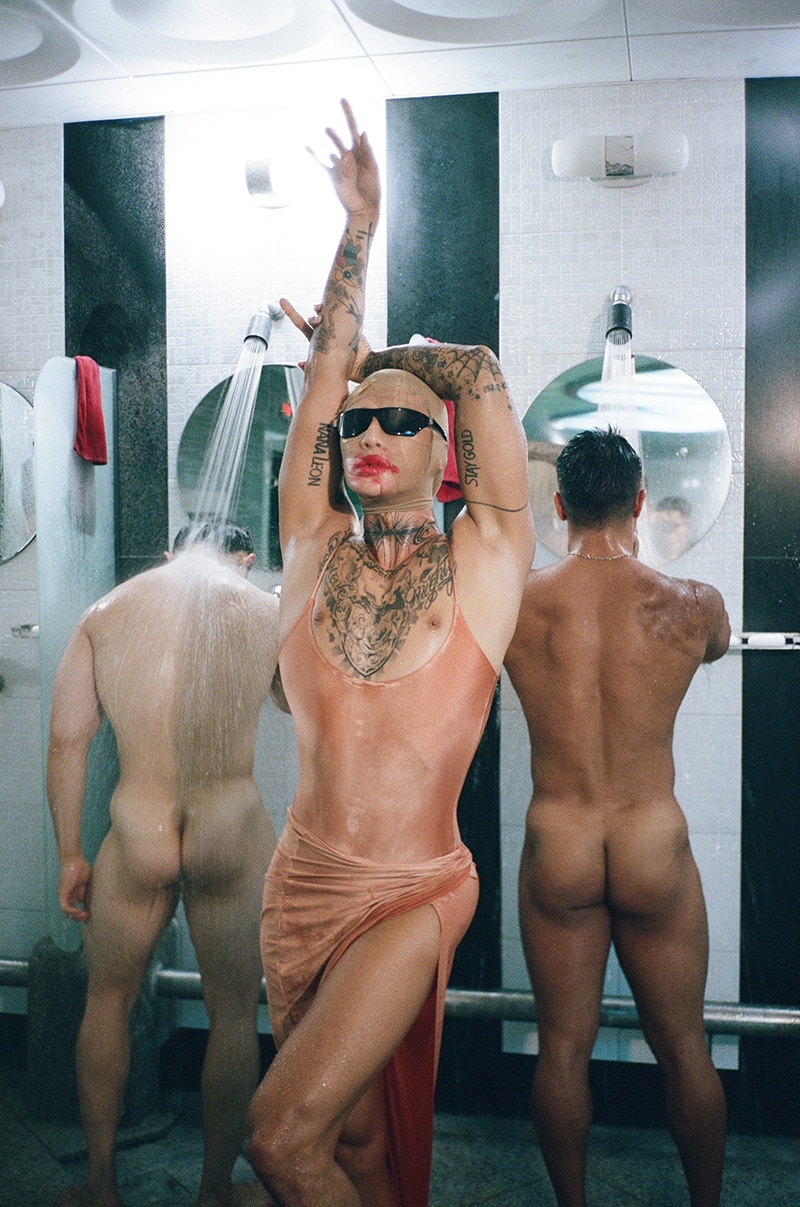
How would you describe your work as a photographer?
Intimacy, humid, floating. I want my photos to feel intense yet evoke the sensation of floating within the bathhouse.
What inspired you to create a series focused on naked men in a Jjimjiibang, a South Korean bathhouse?
My parents ran a jjimjilbang in South Korea. Before moving to Japan, I practically lived in the bathhouse every day, especially during my childhood. I would bathe there morning and evening, constantly surrounded by the sight of various men’s naked bodies. That’s why the bathhouse feels like the most comfortable and sensual place to me. I wanted to create a project that truly reflects my fundamental sense of aesthetics, which is what led me to start this series.
Bathhouses have deep cultural significance in South Korea. How did you navigate balancing tradition and contemporary art in this project?
I haven’t consciously thought about balancing tradition and contemporary art this time. The bathhouse has always been a part of my life, from my childhood up until now. I simply wanted to capture and express a place that has always been meaningful to me.
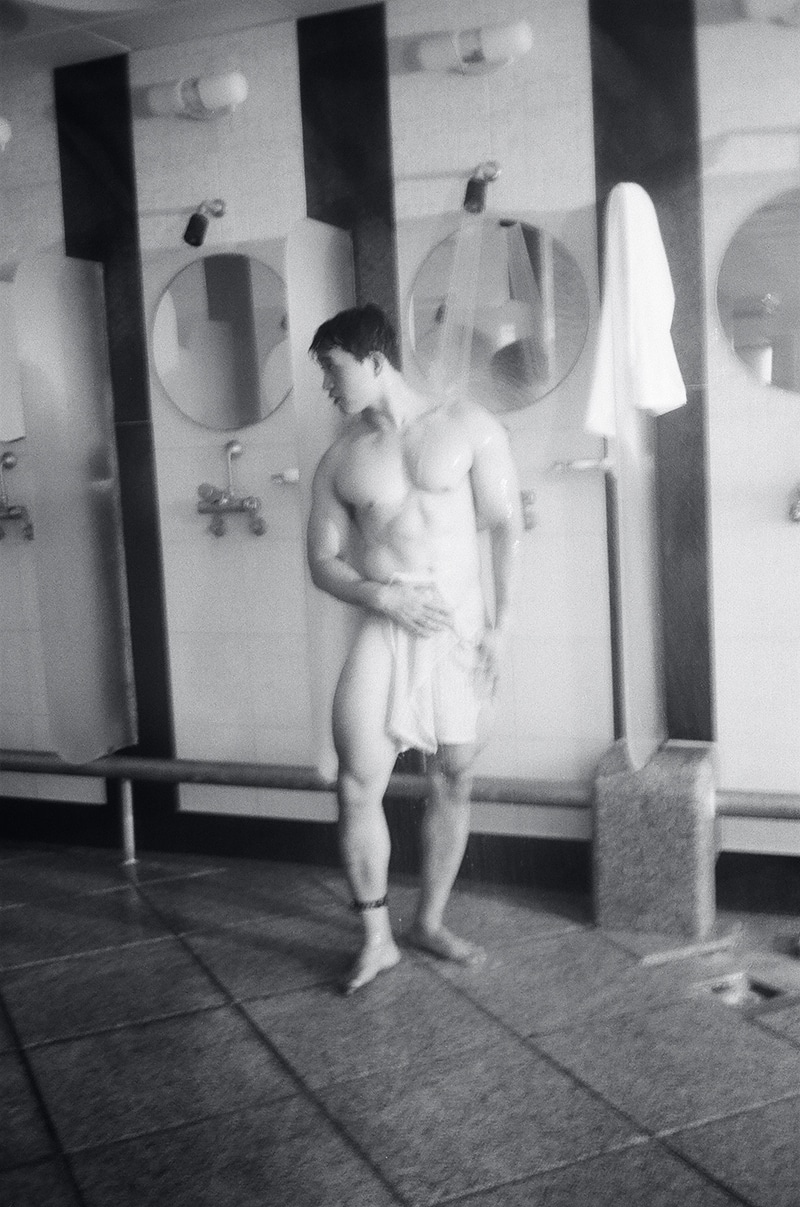
Did any specific personal experiences or memories influence your vision for this series?
In both Japan and Korea, there are certain bathhouses where cruising among gay men takes place. I wanted to explore and share the stories of what I’ve seen and experienced there. It was a deeply shocking experience for me. The bathhouse, supposed to be the most comfortable and relaxing place, somehow became the most provocative and tension-filled space. This duality brought about a sense of internal confusion and complexity.
How have you portrayed them in your photos?
I tried to express the sense of distance between people through their gazes and gestures. I often observed how these glances acted as signals exchanged between individuals, so I directed the scenes with the intention of capturing those subtle exchanges and the emotions behind those looks.
Could you describe the experience at a bathhouse? What is a day there like?
As the son of a jjimjilbang owner, I used to greet guests at the counter and help scrub their skin. The practice of scrubbing, which is not common in Western cultures, can be a bit hard to explain. In Korean bathhouses, people use rough shower towels to cleanse their bodies. We would also alternate between soaking in the bath and relaxing in the sauna to ease our fatigue, and often gather together to enjoy the most delicious food as well.
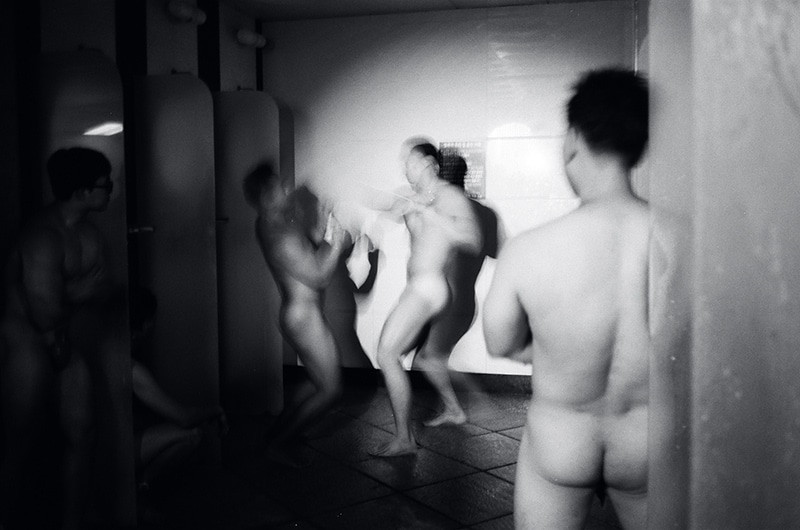
Another country where you have lived, Japan, also has a strong bathhouse culture. What are the differences between these and South Korean ones?
I think the presence or absence of the sesin (body scrubbing) culture is the biggest difference. From my perspective, Japanese bathhouses tend to have a more aesthetically pleasing atmosphere overall. But most importantly, bathhouse culture in Japan feels more active than in Korea. I’ve heard that sauna culture has become quite popular there, which has led to a boom in the bathhouse business. When I recently visited, I was surprised to even see people lining up to enter a bathhouse. In that sense, I found it quite admirable and I’m a little bit envious.
What does nudity represent to you as an artist, and why did you choose it as a central element for this series?
It’s a sense of liberation. How many places are there where you can truly be naked in front of others? At least in Asian cultures, bathhouses seem to be one of them. When you think about it, the might feel strange or unusual. Personally, I feel a sense of freedom in bathhouses, observing people’s bodies and, in solitude, imagining their lives and preferences. To be honest, I hope to experience liberation through nudity, and for others to feel the same.
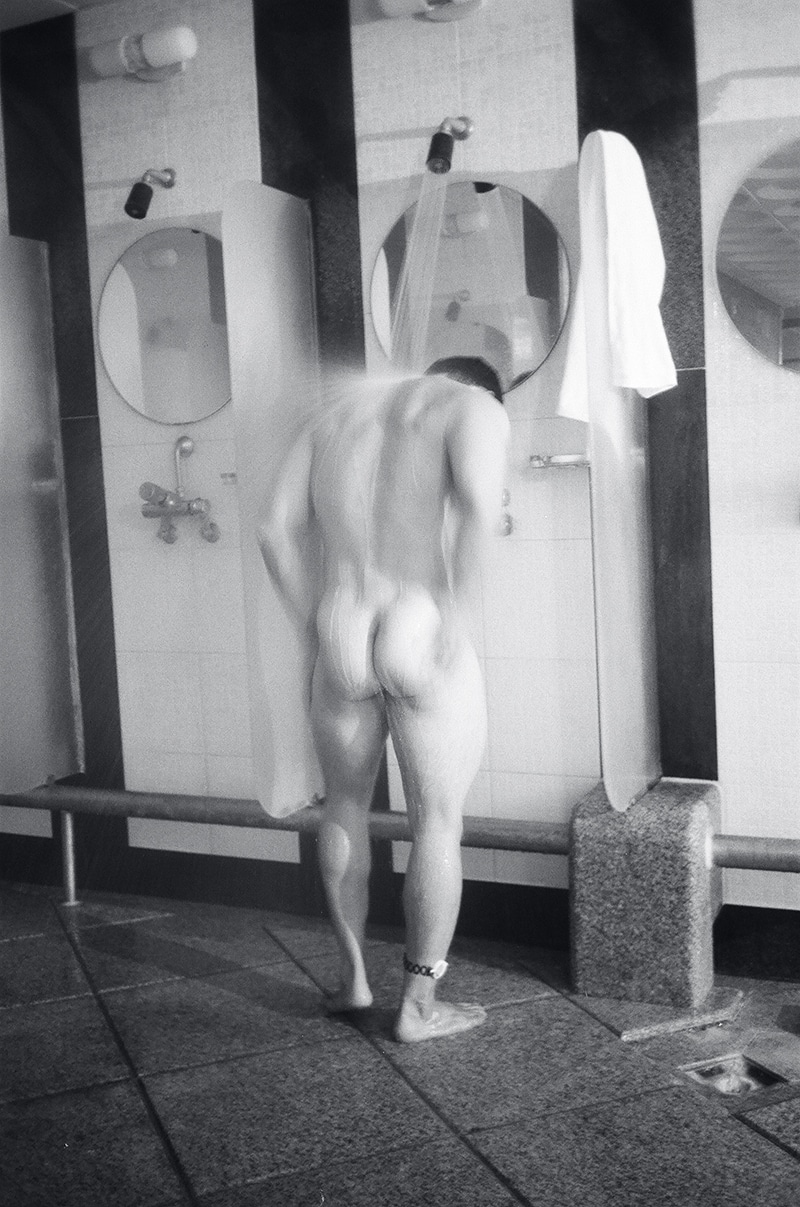
Nudity can evoke diverse interpretations. What message or emotion were you hoping to convey through these images? How does your series explore the male body and masculinity?
With this series, I wanted to strongly emphasize masculinity within the body. In my previous work, I often focused on capturing men with a boyish charm. However, this time, I wanted to highlight the strong, physical characteristics of the male body. I aimed to reveal the tension and intimacy that exist within that context. But above all, I found beauty in the sheer lines and forms of their bodies.
How does nudity in a communal bathhouse setting differ in meaning from other contexts?
As I mentioned earlier, bathhouses are one of the few places where you can spend an extended amount of time naked with others. Typically, being nude or photographing nudity happens in very private settings and situations, but bathhouses are different. They are spaces where nudity is mandatory, and I believe this unique characteristic creates a distinct sense of liberation that you can’t find elsewhere.
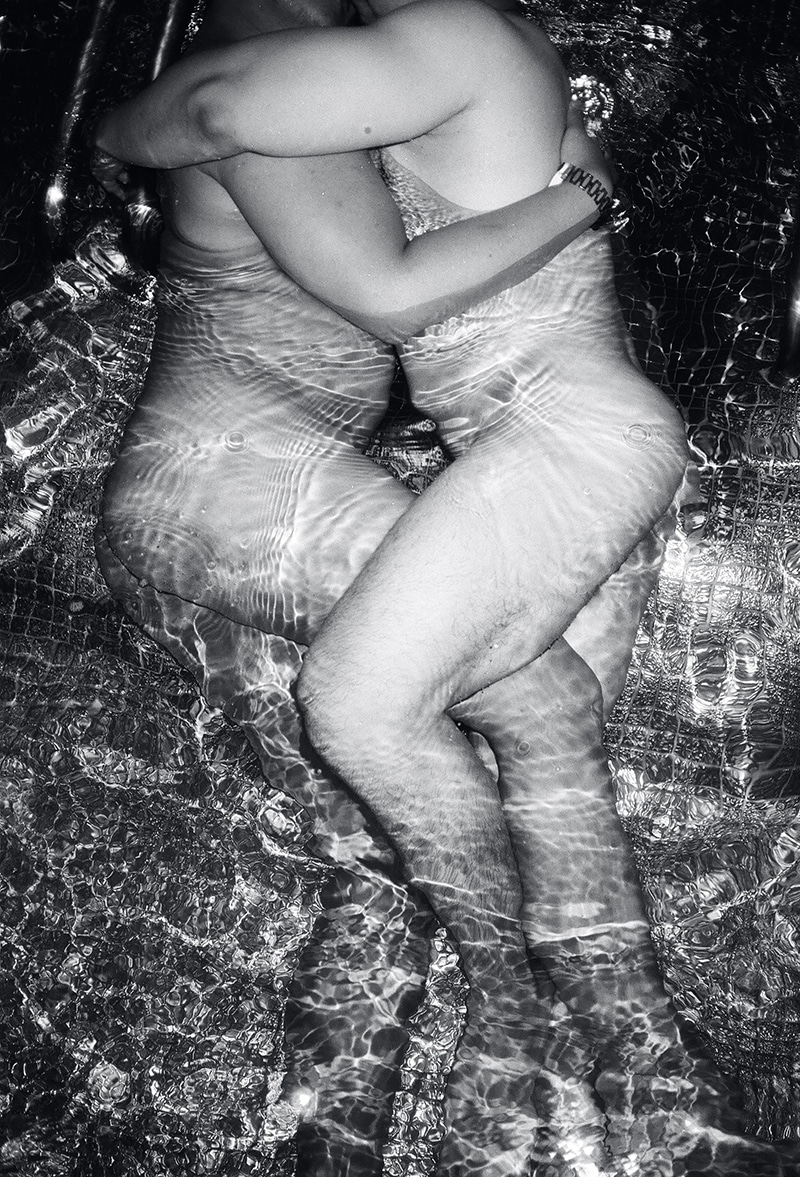
Are there symbolic elements in the bathhouse setting or poses that reflect broader societal themes? What is the role of the stocking covering the face?
The model wearing the stocking over her face is none other than NANAYOUNGRONGKIM, one of the most famous drag queens in Korea. She’s always seeking something unique and unconventional. Even among nude models, she chose a fashion statement that would make her stand out.
What do you think nudity reveals about the human condition that clothing might obscure?
I see nudity as a form of fashion in itself. I believe a person’s life and habits are reflected in their body. When I look at people’s bodies, I find myself deeply imagining how they’ve lived their lives.
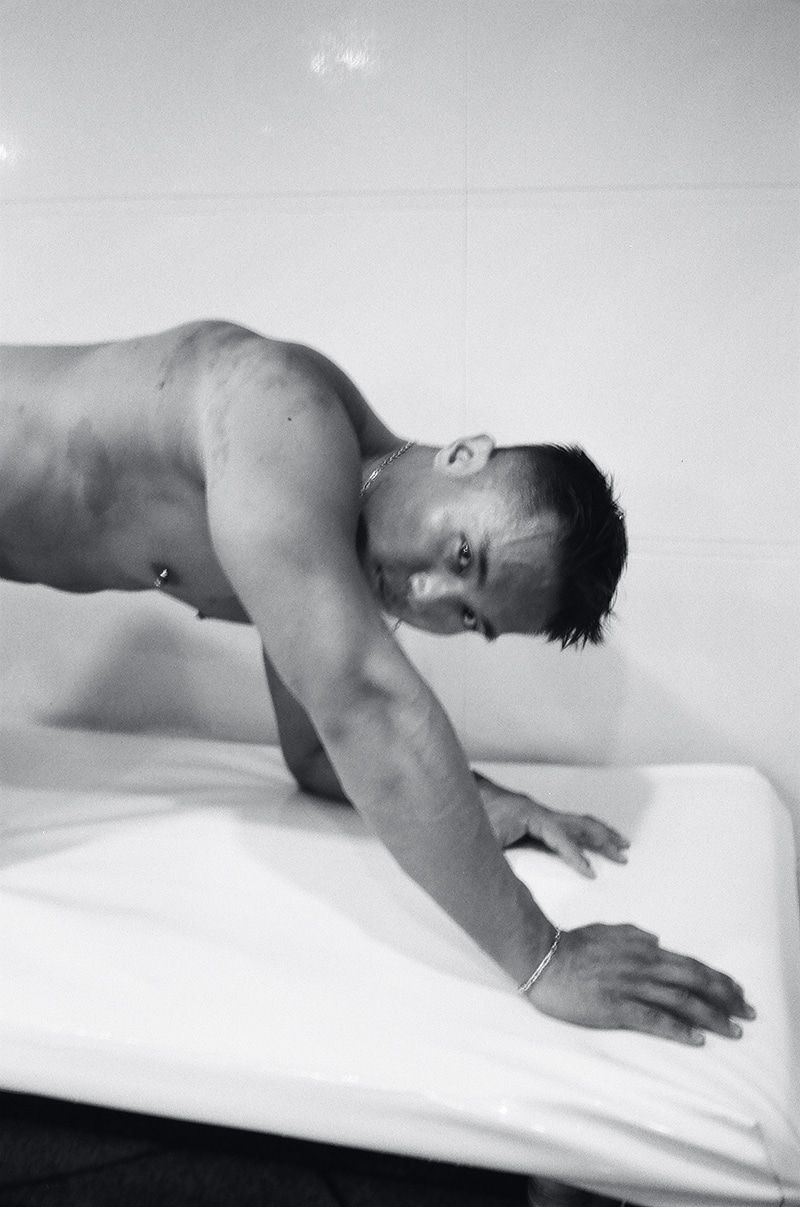
What conversations or reflections do you hope your series sparks about body image, vulnerability, or intimacy?
I wanted to revisit and reinterpret the place where I spent most of my time as a child, now from the perspective of an adult. For this series, I particularly aimed to explore it in a more sensual and sexy direction.
How would you like your career as an artist to evolve in the next few years?
For the time being, I’ll likely continue working as a fashion designer, creating outfits for K-pop idols. As a photographer, I feel there’s still a lot for me to learn, so I plan to focus on producing more personal projects over the next couple of years. Not many people know about me yet, but I want to consistently create work and connect with others. My ultimate goal is to produce projects that spark emotional reactions and meaningful interactions with people.
Check out more Kanmin Kim’s photos below:

